18 | An Ode to a Dive Bar
30 | Out of Adversity Marches Bingata
48 | Localized Baking Ingredients
82 | From Farm to Table: Japan’s Countryside Delights


18 | An Ode to a Dive Bar
30 | Out of Adversity Marches Bingata
48 | Localized Baking Ingredients
82 | From Farm to Table: Japan’s Countryside Delights


Welcome to the last issue of the 2022-2023 CONNECT Magazine season!
This is also my last issue as Head Editor, and I can’t help but reflect on the impact this magazine has had on me throughout my time in Japan. In fact, I was on the team as Assistant Head Editor before I even set foot in the country. Having seen the applications via a Facebook post while scouring the web for information on life in Japan, I applied on a whim and was lucky to snag a spot.
Having an editorial background in the States, the idea of working on a magazine helped to dam the flood of worries. I was grasping at the one lifeboat of familiarity in this sea of unknowns that stretched out before me. Teaching was something I had little to no technical experience with, and my Japanese was limited to konnichiwa, daijoubu, and enough katakana to spell my name. But it was the familiar terms like bylines, style guides, and design briefs that kept my head above the water.
It has been so incredibly rewarding to work with the talented individuals who have found a home or a voice at CONNECT over the past two years. I think each and every one of the team members will agree that while CONNECT can feel like a behemoth, having a team to conquer it with makes it all the more fun.
Now, even with the life I have built for myself in Japan, I find these pages comforting and nostalgic of the anxious new expat that was running on fumes and a dream. No matter where I may end up, telling of my time in Japan will always touch my time telling stories with friends in the pages of CONNECT Magazine.
So, in this final issue leading up to the annual Art Issue, I hope you find yourself reflectant of your own time in Japan. Because no matter your story, you too have taken a leap of faith to move abroad and make your way as a stranger in a strange land. I hope that the rosy thoughts of your own changes, impacts, and future endeavors dance slowly in your head.

Thank you for everything,
Monica HandP.S
Interested in joining the 2023-2024 CONNECT Magazine Team? You can email us directly at connect.ajet.editor@gmail.com to learn more, or join the CONNECT Magazine Contributor’s Circle on Facebook to get updates on when the applications open!
Photo by Evgeny Tchebotarev | Pexels.comHEAD EDITOR connect.ajet.editor@gmail.com
Monica Hand
“Adieu! I have too grieved a heart to take a tedious leave.” — William Shakespeare, from The Merchant of Venice
Rachel Fagundes connect.generaleditor2@ajet.net
“Those who dream by day are cognizant of many things which escape those who dream only by night.” ― Edgar Allan Poe
James Ball connect.generaleditor3@ajet.net
ASSISTANT HEAD EDITOR connect.ajet.assistantheadeditor@gmail.com
Dianne Yett
“The role of a writer is not to say what we all can say, but what we are unable to say.” — Anaïs Nin HEAD DESIGNER connect.ajet.visualmedia@gmail.com
Lloyd Cruickshank
“Nuh bite di han weh feed yu”
Translation: Never bite the hands that feed you.
Meaning: Do not be ungrateful to the one who has helped you.
“‘Time is an illusion. Lunchtime doubly so.” ― Douglas Adams
Sophia Maas connect.generaleditor4@ajet.net
“There have been great societies that did not use the wheel, but there have been no societies that did not tell stories.” ― Ursula K. Le Guin
Marco Cian connect.ajet.webeditor1@gmail.com
“I’m an artist, y’know. Subject to moods.” — Crow T. Robot
ASSISTANT HEAD DESIGNER connect.ajet.assistantvm@gmail.com
Emily Griffith
“You’re only here for a short visit. Don’t hurry, don’t worry. And be sure to smell the flowers along the way.” — Walter Hagen

Norris Wang connect.ajet.webeditor2@gmail.com
“To foster inner awareness, introspection, and reasoning is more efficient than meditation and prayer.” ― Dalai Lama
Ryon Morrin connect.generaleditor1@ajet.net
“Pui Pui.” — Potato, from Pui Pui Molcar
connect.socialmedia@ajet.net
Valerie Mercado
“Every rejection, every disappointment has led you here to this moment.”— Waymond, from Everything Everywhere All at Once
HEAD EDITOR
Monica Hand
ASSISTANT HEAD EDITOR
Dianne Yett
SECTION EDITORS
Sierra Block Gorman
Ryon Morrin
Andy Hanson
Marco Oliveros
Knox Yoder
Pitta-Gay Powell
Chloe Holm
Alexandra Crombie
CONTRIBUTORS
Yamashita Saido
Nabeela Basa
Sophia Maas
Knox Yoder
Sophie McCarthy
Valerie Wonderland
Etienne van Rooyen
Monica Hand
Dianne Yett
Pitta-Gay Powell
Thomas Coleman
Veronica Neilson
Tiffany Aguilar
Martina Comorkova
Jake Whiton
Tom Baker
HEAD OF DESIGN & LAYOUT
Lloyd Cruickshank
ASSISTANT HEAD DESIGNER
Emily Griffith
ASSISTANT DESIGNERS
Kristen Camille Ton
Sara Gyi
Amy Ratcliffe
COPY EDITORS
Jon Solmundson
Natalie Andrews
Ashley Leung
Sage Olges
GENERAL SECTION EDITORS
Sophia Maas
James Ball
Ryon Morrin
Rachel Fagundes
WEB EDITORS
Marco Cian
Norris Wang
SOCIAL MEDIA
Valerie Mercado
COVER PHOTO

Leo Okuyama
TABLE OF CONTENTS PHOTO
Zhaoli JIN
ART & PHOTOGRAPHY
Evgeny Tchebotarev
Susann Schuster
Sarah Goto
Leo Okuyama
This magazine contains original photos used with permission, as well as free-use images. All included photos are property of the author unless otherwise specified. If you are the owner of an image featured in this publication believed to be used without permission, please contact the Head of Graphic Design and Layout, Lloyd Cruickshank, at visualmedia.connect@ajet.net. This edition, and all past editions of AJET CONNECT, can be found online at http://ajet.net/ajet-connect/magazine-issues/ or on our website. Read CONNECT online and follow us on ISSUU
Photo by Zhaoli JIN | Unsplash.com
ART EDITOR connect.ajet.arts@gmail.com
Sierra Block Gorman
“People who say change is impossible are usually pretty happy with things just as they are.” ― N.K. Jemisin, from The City We Became
ART & CULTURE DESIGNER connect.ajet.assistantdesigner1@gmail.com
Kristen Camille Ton
“The gardener digs in another time, without past or future, beginning or end. . . Here is the amen beyond the prayer.”
— Derek JarmanENTERTAINMENT EDITOR connect.ajet.entertainment@gmail.com
Knox Yoder
“Once you feel like you’re being dictated by other people’s expectations, [things] usually backfire.” Rob Zombie
ENTERTAINMENT DESIGNER connect.ajet.assistantdesigner4@gmail.com
Sarah Gyi
“And I can’t forget it, all of the love, all of the love, as we stood tall together.”
— Oh Wonder, from My Friends
CULTURE EDITOR connect.ajet.culture@gmail.com

Marco Oliveros
“Don’t tell me the moon is shining; show me the glint of light on broken glass.”
— Anton Chekov
COPY EDITOR connect.ajet.copy1@gmail.com
Natalie Andrews
“A cat understands how to be pleasant in the morning. He doesn’t talk.”
― Tamora Pierce, from Mastiff
Photo by Leo Okuyama | Unsplash.com

s much as I make a point to travel when possible, I still don’t leave Kyushu or even the general area around my prefecture (Saga) very often. I prefer to stay close to home and not worry too much about exorbitant travel costs or hotels. There’s plenty to do on Kyushu, and plenty I still haven’t done, and as a result I’ve felt much more connected to my region and its culture. That’s a piece of unsolicited advice for you that you’ve undoubtedly heard before—if you’re able, try to connect to the little piece of Japan you’re in, in whatever way you can.
I’m particularly lucky in terms of readily accessible information about my region, since one of Japan’s four national museums is practically right on my doorstep. The Kyushu National

Museum is an imposing structure in a smaller area called Dazaifu, just outside of Fukuoka City. The building was designed by Kiyonori Kikutake, a name you might recognize if you’re interested in Japanese architecture. Kikutake is known for his contribution to the founding of Metabolism, a style of architecture that incorporates organic elements and concepts into large megastructres.
The design of the Kyushu National Museum has distinctly organic shapes—a sweeping structure with a blue roof and mirrored glass sides. The intention is to make the building blend in with its surroundings. When approaching the museum, I was impressed by how the building didn’t disturb the flow of the landscape and instead integrated into it without being an eyesore. Dazaifu is a very lush area,
and the museum’s design only compliments that biodiversity.
Immediately inside the museum is a huge, vaulted entrance hall that plays host to a multitude of events and special displays. Though this was not the case during my visit, the Kyushu National Museum will occasionally host concerts or lectures in this area. Also on the first floor is something called the Ajippa, an interactive gallery exhibit geared towards patrons of all ages featuring a multitude of Asian cultural artifacts such as costumes, instruments, and games. The main gallery on their fourth floor also has a heavy emphasis on Asian cultures and their histories. But wait . . . if this is a Japanese national museum, why is there so much focus on other countries?
his brings me to one of my favorite things about Kyushu’s history and is, relatedly, why I loved this museum so much. Kyushu is known for being a historical point of contact with the Korean peninsula, mainland China, and other Asian countries, as well as some European countries. Because of this important history, the Kyushu National Museum goes out of its way to discuss and highlight the ways Kyushu specifically, and Japan in general, has been impacted by its close proximity and continued exchanges with other countries. Though the focus is largely on the cultural and historical aspects, these things cannot be expressed without heavily touching on and displaying the various artworks from the prehistoric era to the modern era.
The main exhibition floor of the museum is, at least in my opinion, one of the best designed and most interesting museums I’ve been to in Japan. The large, open areas with lots of historical artifacts on display guide you through Japan’s history as it relates to the world at large smoothly and effectively, depositing you at times in adjacent wings that detail more specific cultural, historical, or artistic topics. One of my favorite wings— called “Image of Ideal Asians”—showed the differences in beauty standards as viewed through the depictions of deities and other religious artworks throughout time. Art and beauty, subjective things that are as malleable as any other part of society, can provide a unique window into the influences and cultural milieu of the past, which this wing pays particular attention to.
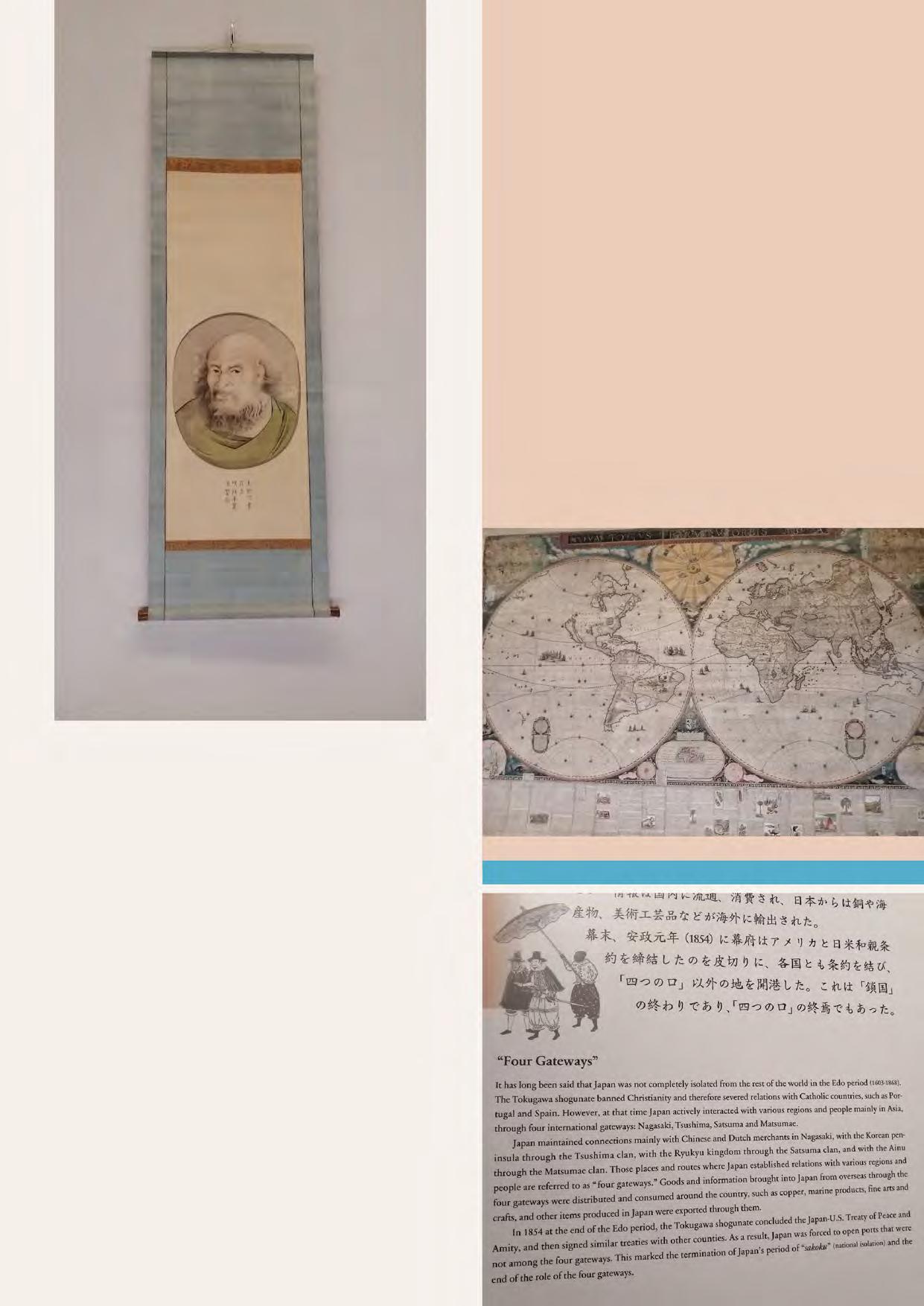
won’t walk you through every aspect of the main exhibit, but know that, as long as you’re interested in art, history, or culture you will find more than enough to keep your attention. Below the main gallery, on the third floor, there are rotating exhibitions that change every few months. The current exhibition—scheduled to change after June 11—is a collection of Art Nouveau glassware created by Émile Gallé and the Daum brothers in the late 19th and early 20th centuries. With a separate admission price from the main exhibition—1,700 yen for the former and 700 yen for the latter—it’s up to you to decide if the allure of intricate glass art compensates for the price. Unfortunately, I didn’t have time to visit this gallery, so I cannot give my own opinion on it.
If you find yourself planning on visiting Fukuoka, I would highly recommend looking into what
they ’re showing for the rotating exhibition whenever you’ll be there. You can find their exhibition schedule easily on their website. You can also find their event schedule on their website. Who knows, maybe you’ll be able to listen to some smooth jazz before you embark on a journey through Japan’s history.
But, before I let you go, I also wanted to touch on the area around the museum. If you have an affinity for anything related to arts, history, and culture, then I definitely recommend making an attempt to visit Dazaifu, not just the Kyushu National Museum. The location itself—at one time Japan’s western capital—is an incredibly culturally rich area, with many shrines and historical landmarks to keep you occupied for an entire day. I highly recommend visiting Dazaifu Tenmangu Shrine, a beautiful shrine complex with hundreds of plum trees that are
a sight to behold during their blooming season. As someone who is easily captivated by the beauty of nature, I absolutely adored walking around the area and discovering several footpaths that led to, among other things, an Inari shrine in the hills above Dazaifu Tenmangu.
After a long day trudging around the northern part of Kyushu, I was exhausted but happy. My corner of the world in a corner of Japan has a lot to offer, and exploring those offerings and the history and legacy of its artwork and culture never fails to inspire me to be creative in return. I hope that, if you visit, you can take something meaningful or inspiring from the historic gateway to Japan back home with you.
ophia Maas is a first-year ALT living in Saga Prefecture. One of their premier hobbies is exploring new places and writing about them later.
Stephanie McWilliams (museum display images)
Janeth Vasquez (museum architecture images)


rowing up in a city as big and rich in culture as Johannesburg, post-apartheid, I was blessed to watch creativity become the heart of my city, with colorful expressions of history and culture telling a story at every corner. I, myself, am not an artist. I consider myself more of an aesthete one who admires the work of artists. Up until I came to Japan, I was unaware of just how much creativity ran through the streets of Johannesburg.



While I am well aware that I live in a homogenous society, there is no place that could emphasize this more than a school in Japan. Everything has a time and place in Japan. Even art. This was one of my biggest cultural lessons, living here. Walking through the hallways of my high school, perfectly aligned cream desks and light blue chairs are found in every classroom. In the hallways the side cabinets are stacked with black leather school bags, only told apart by a keychain of a student’s favorite character or brand and of course, uniforms ensure uniformity.


But then, at the foot of the staircase of each floor, pieces of art almost as long as the cream wall behind them, would stop anyone in their tracks with their beauty. I found myself taking a minute to pause every time I walked down the stairs, mesmerized by the use of colors, textures and the distinct protagonist; a blue whale emerging from clouds.
Each piece reveals a new story with every new viewing. When I found out that it was our very own art teacher who created these, I felt like I was the whale amongst the clouds. It was a fantastic opportunity to be with the artist himself and discuss his pieces with him. Meiokan High School art teacher Yamashita Saido, the artist of these pieces, which fall under the collection “SORA”, is one of the kindest, friendliest and most humble people I have ever met. He would often invite me to his exhibitions, two of which I was able to attend in Kagoshima.
 Yamashita Saido (Kagoshima) interviewed by Nabeela Basa (Kagoshima)
Yamashita Saido (Kagoshima) interviewed by Nabeela Basa (Kagoshima)
ast year, he gifted me with a ticket to his exhibition in Tokyo. The 89th Dokuritsu Exhibition is a national independent competition which has been held every October since the 1930s. The competition has since seen the works of painters such as Kunitaro Suda and Seiji Chokai.

Shortly after the event, Yamashita shared the news with me that his piece SORA ‘22-philosophy- won first prize at the exhibition. Yamashita was kind enough to agree to an interview for this article. The interview was conducted in English and Japanese. A fellow colleague, Tsuneyama Miwa, assisted with interpreting. The following interview is based on the translation and transcription of a recorded interview, conducted on March 8, 2023 at Meiokan High School.
Y: I was born in Kagoshima and grew up in Kagoshima.
Y: I’ve been painting since I was two years old. When I was 10, an elementary school student, I entered a competition at school and drew a ship. The judges said that they were not able to score me because it was like an adult drew the picture. In high school, I joined the art club and entered a prefectural competition in Kagoshima.
WHEN DID YOU START HAVING EXHIBITIONS?
Y: From the age of 25. Up until now I’ve had around 100 exhibitions.
WHAT INSPIRED THE WINNING PIECE SORA ‘22 -PHILOSOPHY- ?
WHY HAVE YOU CHOSEN TO USE THE CLOUDS AND BLUE WHALE IN SO MANY OF YOUR PIECES?

Y: The clouds and the whale symbolize life for me. I first decided to use clouds because I used to look at clouds and see different shapes in them, and animals. The movement of the clouds represents life. Ten years ago when I started painting clouds, the whale was not yet a part of it. I just started with clouds.
The whale is a big animal, it is the biggest animal in the world. It also represents life, for me, and its importance. If I used a small animal or “cute” animal, it would not add as much importance to the picture. I chose it because of its spectacular size.
Yamshita went on to explain that in a piece he created in 2021, in which the whale can be seen to crash into a fighter jet. His inspiration came from feeling sadness around current events at the time, especially war and struggles around the world. The whale and clouds in this piece are used to emphasize his message that life is more important than man-made objects and it will always be of greater value.
Y: I always try to add a new element to the picture. In this picture I added a new element to the blue whale, Koinobori Koinobori is a symbol for children. I look at my daughter and think about other children around the world suffering. I used this to symbolize the hope for peace around the world, especially for children.
Y: I feel more confident after winning first prize. I feel motivated for my next challenge. As an artist I feel like I am progressing and moving up in my career.
Y: Keep drawing, everyday, all the time.
Y: I think everyone is an artist. For example, if you see a beautiful sunset and appreciate it, that is art. Art makes others happy, just like other jobs bring people happiness, such as being a doctor or teacher. They all add value.
An artist is not just someone who creates something beautiful but feels something beautiful.
amashita is currently working on a collection of smaller pieces for a children’s hospital in Kagoshima. He explained that he chose to use brighter colors, in hope of making them smile and adding happiness to their time there.

Conducting this interview was an absolute honor.
I would like to thank Mr. Yamashita for agreeing to this and Tsuneyama Miwa for help interpreting.
abeela is a thirdyear JET living in Kagoshima. She is an aspiring writer when she’s not procrastinating writing. She enjoys traveling, dancing, and Sunday lunches with her friends.
amshita Saido is the art teacher at Meiokan High School. He enjoys spending time with his family and challenging himself with his art.

Adult life is filled to the brim with stressors. Bills, taxes, long work hours, tedious jobs, family drama; the list seems never-ending. Thus, when the work day ends and we all get some free time, we want to relax, forget about the day, and go somewhere where the troubles melt away. For many, this escape is found within a dimly lit room smelling of smoke where strangers become family within the span of one night: the dive bar.

For those that enjoy an alcoholic beverage and the company of others from time to time, it can be difficult finding the perfect bar. After all, as the legendary 1980s sitcom Cheers put it, “Sometimes you wanna go where everybody knows your name.” Now, it is impossible for one bar to be THE perfect bar for all people. Some people enjoy a drink alone with quiet jazz playing in the background. Some prefer loud music and droves of people. Others prefer classy bars with expensive cocktails and impressive views of the city. As for me, all I need are good vibes, good drinks, and good people.
As someone who enjoys exploring every city they find themselves in, I can give you good dive bar recommendations for just about anywhere I have visited. However, I had never found myself in what I would call my “perfect bar.” I had become a regular at lots of places in the United States and Japan, but nowhere had screamed “home”—until recently.

It was a sunny afternoon in August 2022, soon after I had begun my time teaching English in Japan. Arriving in the middle of summer vacation, I was given a few days by my employers to explore. Instead of exploring my new home, I found myself on a bullet train headed towards Kanazawa City in Ishikawa Prefecture. Heavy storms impeded my transfer from Kyoto to Kanazawa, however, so I found myself stuck in Kyoto overnight, booking a last minute Airbnb and wondering what to do with myself.
As usual, the first thing I did in a new city was try and find a place to drink for the night. I headed towards Gion, one of Kyoto’s popular nightlife districts, and googled “punk bar Kyoto.” Nothing came up that screamed “punk,” but one place caught my eye: a basement dive called “JOKER.”
JOKER stands out among the many bars littering Gion. The entrance doesn’t
immediately feature a sign decaling the bar’s name but instead features black letters with red backing that read “OPEN ME UP,” which lead into a fairly steep staircase into a basement. If the name JOKER doesn’t catch your attention, surely this sign will.



The bar itself is fairly large as far as most Japanese bars go, with faux brick walls and decor ranging from guitars to slightly creepy mannequins to signs in English that read things such as “bad sex is better than a good day at work.” Most nights, the music is some form of punk rock, ranging from Sum 41 to The Offspring to Bad Religion. The menu is filled with English expletives recommending lemon sours, the draft beer is served from a saxophone, and the wall next to the bar is filled with handwritten doodles of everything from bar staff to anime characters. All of this creates an atmosphere that makes guests (or, at the very least, me) feel comfortable and ready for a night of drinking.

The first time you enter JOKER, you’ll be greeted with a traditional “



” (read irasshaimase, welcome). Entering by myself, I was offered a seat at the bar, right in front saxophone of beer. Having been in Japan a total of maybe 20 days, my Japanese was (and still is) not the best, so I fumbled through ordering a beer. The bartender, Jose, asked if Japanese was okay, to which I responded that I wasn’t very good at it but would try my best. Imagine my shock when he fluently responded, “Oh, well I speak English”
Turns out Jose had spent a number of his younger years living in Texas (hence the nickname Jose, as his classmates thought he looked hispanic . . . gotta love America) and thus was completely fluent in English. We went on to talk for the rest of the night, and (as would become commonplace in JOKER) I even befriended the woman sitting next to me, who also spoke a great deal of English. After a night of beer, shots, and laughter, I bid my new friends goodnight and assured them I would be back. Due to the aforementioned weather issues, my friends from Kanazawa decided to join me in Kyoto for the
for that one night.

All of my friends know about JOKER, and I basically won’t shut up about it, but I know that my love for the place isn’t unique: everyone I’ve brought there or met there comments about how special it is and how happy they are that they ended up there. Whenever I end up in JOKER these days, it truly feels like returning home, as I’m greeted with a hug from Shouko, huge smiles and laughs from Jose or Kouhei, or a surprised face from a Kyoto local that hasn’t seen me in a while.
This article isn’t meant to simply be a fluff piece for JOKER or to convince you to go there (though you should, and tell them Knox sent you). It’s meant to inspire you to get out of your comfort zone and explore whatever city you find yourself in. Don’t just go into the popular bar that everyone you know goes to; do some research, go somewhere new, and make conversation with those around you. If you’re lucky, you might find yourself a new home away from home—your own JOKER.
Knox Yoder (they/them) is a first-year JET living and working in Ureshino, Saga. They have too many hobbies, including but not limited to binging horror movies, playing new and old video games, reading manga, and nerding out over My Chemical Romance. They spend too much money on travels across Japan, and drinking in bars such as JOKER.




y yearning for the 商店街 (shotengai, or “shopping street”) of Namba and the energy surging throughout the city was immediately interrupted by a thought that recurred just about every day I spent in Gifu: “THESE MOUNTAINS THOUGH.” Whatever Gifu was, I had to admit it had something that Namba didn’t. It wasn’t until living in Gifu that I really looked at and appreciated mountains—their contours, the shadows that the clouds cast on them, and the very simple fact that land can stretch high above you like that. I lived in an area where Ena-san (恵那山), one of the major mountain peaks of the Kiso Mountains (木 曽山脈), stands in plain and majestic sight. The view is even better if you take the quick hike up to the top of Naegi Castle Ruins (苗 木城跡).
My first weekend living in Nakatsugawa, Gifu, I jumped into my glorified golf cart of a car and buzzed wherever I could get a good view of even more mountains. It was winter, so everything looked dead, but the snow dusting the peaks was lovely.

nd that wasn’t the last time these mountains would enrapture me. The homies and I would just be cruising up Route 19 on our way home from errands. We’d be in the middle of a conversation that has nothing to do with mountains, and then a big one would emerge. The sun would be in just the right spot to paint the sky some brilliant citrusy sunset. Talking and listening would abruptly halt. “Woooooow.” They must possess some kind of power. Of course they do. They’re massive—giants who tacitly preside over this land now and long after we all perish. Such silence and strength fascinated me.
Despite that strength, the Kiso River (木曽川) proved itself a worthy opponent, cleaving a path right through the mountains and my brain while I was thinking about whatever during my morning commute. Taking my eyes off the road to gaze at it while driving was, of course, not safe, so one day, I drove up, stopped my glorified golf cart car somewhere nearby, and walked the rest of the way to the bridges I’d drive over. There were two that I used regularly, the Gyokuzo Bridge (玉蔵橋) and the Shiroyamao Bridge (城山大橋).

hat wouldn’t be the last time that the Kiso River would captivate me. Some days the water was high, and on others it was low. Some mornings, fog and mist hung over it. The river coursed so much farther than you can even see, but my eyes tried to follow anyway. The mountains in the distance poked up as if to say hello. I stopped there every season to greet them back. There are no mountains in Namba to say hello.


here I lived in Gifu, I didn’t even have to drive to see something beautiful. Just a stone’s throw from my house was Yotsumegawa Sakura Namiki (四ツ 目川桜並木). I like fall leaves in Japan much more than I like sakura and would 10/10 recommend coming to the Chubu Region for the fall, but this is one place I will make a spring pilgrimage to every year. I remember when I discovered it. Trees flanked either side of the creek, and just like the Kiso River (though for not nearly as long), it kept going. It was undisturbed, inconspicuous, and brighter than the smile it put on my face.
I walked, and there was nothing else but the sakura and the creek quietly rolling beside me. I walked until I reached what I call the filthy rainbow of Nakatsugawa.
It was dirty, but it was an icon. It wasn’t cleaned the entire time I lived there, and I didn’t even care. That was part of its charm. It wouldn’t be the same filthy rainbow of Nakatsugawa anymore if it were cleaned. Within the past few months, however, it was painted blue, and people were upset about it! I was too! It’s now just a blue arch. It’s still the filthy rainbow of Nakatsugawa in my heart, though.
I went back there just a few weeks ago, drawn back by whatever power the mountains, the river, and sakura of Gifu possessed. The rain was bent on making sure that my entire time there was wet, inconvenient, and disgusting. I would have loved to see the sakura in full bloom on a bright, clear day. However, the weather didn’t ruin it for me. I stared at the Yotsumegawa Sakura Namiki, thinking of nothing else while tears welled up.

aybe I cried because these places reminded me of how much I changed in Gifu and how I valued that experience. Maybe I simply missed the tranquility. Maybe it’s something I should just accept rather than question. I was crying, but I was okay. I was more than okay. I hope everyone can find a place that can bring them to tears like that. As much as I really wanted to live in Osaka again. As much as I enjoy my life now in Osaka, there’s no place like that here.

alerie is just a chick who likes to talk about Gifu and benkyo nihongo. She is enthusiastic about Alice’s Adventures in Wonderland, Through the Looking-Glass, and 551 HORAI butaman and wants the world to enjoy them (maybe even at the same time).
Valerie Wonderland

kinawa is a world-class travel destination with a dizzying amount of activities to do and things to see. Between the luxurious beach resorts and campy Americana shops, it is easy to lose sight of what is actually considered “Okinawan” culture. However, a traveler only has to stroll through the small, windy backstreets of Naha to catch a glimpse of the Ryukyuan customs that have long persevered in the face of much adversity. The culture of Okinawa is a unique blend of native, Japanese, and other Asian influences, which is fully represented in the artform of bingata.
Bingata (Okinawan: 紅型, literally “red style”) is a stenciled, resist dyeing technique originating in Okinawa from about the 14th century. Put simply, a resist dyeing technique involves using a stencil pattern covered in wax or paste. The stencil is placed on the fabric for the areas not intended for dyeing. Then the dye is applied, starting from lighter colors to darker colors. After letting the dye set for a while, the fabric is washed to remove the wax residue.

hile originally created for and worn by royalty and nobility, today bingata can be enjoyed by everyone, especially Okinawans during traditional Ryukyuan festivals and performances. Part of the historical luxury of bingata came from the rarity of the dyes. Traditionally, and mostly still true today, bingata uses natural pigments such as indigo and fukugi tree dye. In olden times, dye colors were classified according to rank, age, and gender. The highest-ranking color was yellow, which was exclusively reserved for royalty and aristocrats. The lower classes only had access to much simpler design patterns and colors, such as indigo and black. The vibrant and graphic colors and motifs (usually fish, birds, flowers, and fauna) quintessentially encapsulate the spirit and atmosphere of Japan’s southernmost prefecture. For a firsthand viewing experience, some historical Bingata kimono are displayed at the Naha City Museum of History. As with many aspects of Okinawan culture and Ryukyuan culture before that, influences from China, India, and Southeast Asia are seen within the style of bingata.

his intangible cultural asset almost completely disappeared after the Battle of Okinawa in 1945. During this infamous battle, countless bingata shops were destroyed, and many of the original stencils that had been passed down through generations were gone. Fortunately, the craft was preserved thanks to the dedicated work of a few, such as Eiki Shiroma. During the Ryukyu period and up to World War II, there were three major families running the bingata industry: Chinen, Shiroma, and Takushi. Eiki Shiroma, who was a bingata artist carrying out his family’s legacy before the war, saw the dire situation the craft was in— how it could be lost forever if something was not done. He traveled to mainland Japan in search of original stencils that had been accrued by Japanese artists, collectors, and soldiers. Thanks to his and others’ diligent efforts, not only has bingata survived extinction, but it has thrived and taken on new variations in what is now considered the revival period of bingata.

he founder of Shuri Ryusen bingata studio, Yamaoka Koto, also played a key role in reimagining the Okinawan custom through research into new plant paints, quality improvement, and innovative stencil methods and techniques. One such technique is the practice of using coral fossils. The idea formed entirely by happenstance. One day, Yamaoka was walking along the beach and found a dead piece of coral. Coral being locally associated with wishes for the prosperity of descendants, longevity, and a happy family, Yamaoka decided to use the coral as a stamp pattern for bingata. Fast forward to today, Shuri Ryusen in Naha offers one of the most interesting experiences for tourists visiting Okinawa. For only 3,300 yen, a visitor can create their own original coral pattern design in the bingata style on a tote bag, T-shirt, or wrapping cloth. Since coral harvesting is normally illegal and Shuri Ryusen is the only
bingata shop that holds a special license and trademark for this pattern making method, the hourlong workshop is truly a once in a lifetime experience worth every yen. After completing the DIY craft, visitors can also take a tour through the shop’s beautiful studio space, displaying the intricate patterns and fabrics created there. At Shuri Ryusen, guests get to leave with not only a beautiful item they have created. They also get the deep honor of knowing that they played a small part in keeping this ancient artform alive.
Benjamin Franklin once said “Out of adversity comes opportunity” and it is hard to ignore the immense amount of hardship that has spattered the Ryukyuan Kingdom and Okinawa’s history. However, through this turmoil, a resilient and dynamic culture of art, music, and language marches on and should be recognized and appreciated by all those who visit.
ophie McCarthy was a JET for four years (2018-2022) in Kobe, Hyogo, and now lives in Tokyo. In her free time, she enjoys reading classic literature, visiting coffee shops, and practicing film photography. Check out her photos on Instagram: @filmbysophie
Sources
Art Island Okinawa
Visit Okinawa Japan
Shuri Ryusen
Naha City Museum of History
Ryukyu Bingata

Image Credits
Sophie McCarthy

WELLNESS EDITOR connect.ajet.health@gmail.com
Alexandra Crombie
“He folded his fear into a perfect rose. He held it out in the palm of his hand. She took it from him and put it in her hair.”
— Arundhati Roy, from The God of Small Things
WELLNESS DESIGNER connect.ajet.assistantvm@gmail.com

Emily Griffith
“You’re only here for a short visit. Don’t hurry, don’t worry. And be sure to smell the flowers along the way.” — Walter Hagen
SPORT EDITOR connect.ajet.sports@gmail.com
Andy Hanson
“The one thing that you have that nobody else has is you. Your voice, your mind, your story, your vision. So write and draw and build and play and dance and live as only you can.”
— Neil GaimanSPORTS DESIGNER connect.ajet.assistantdesigner2@gmail.com
Amy Ratcliffe
COPY EDITOR connect.ajet.copy3@gmail.com
Ashley Leung
“It’s a deal. You protect the world. I’ll protect you.” — Xiao Bei, from Better Days
“お疲れ様です”Photo by Sarah Goto | Unsplash.com
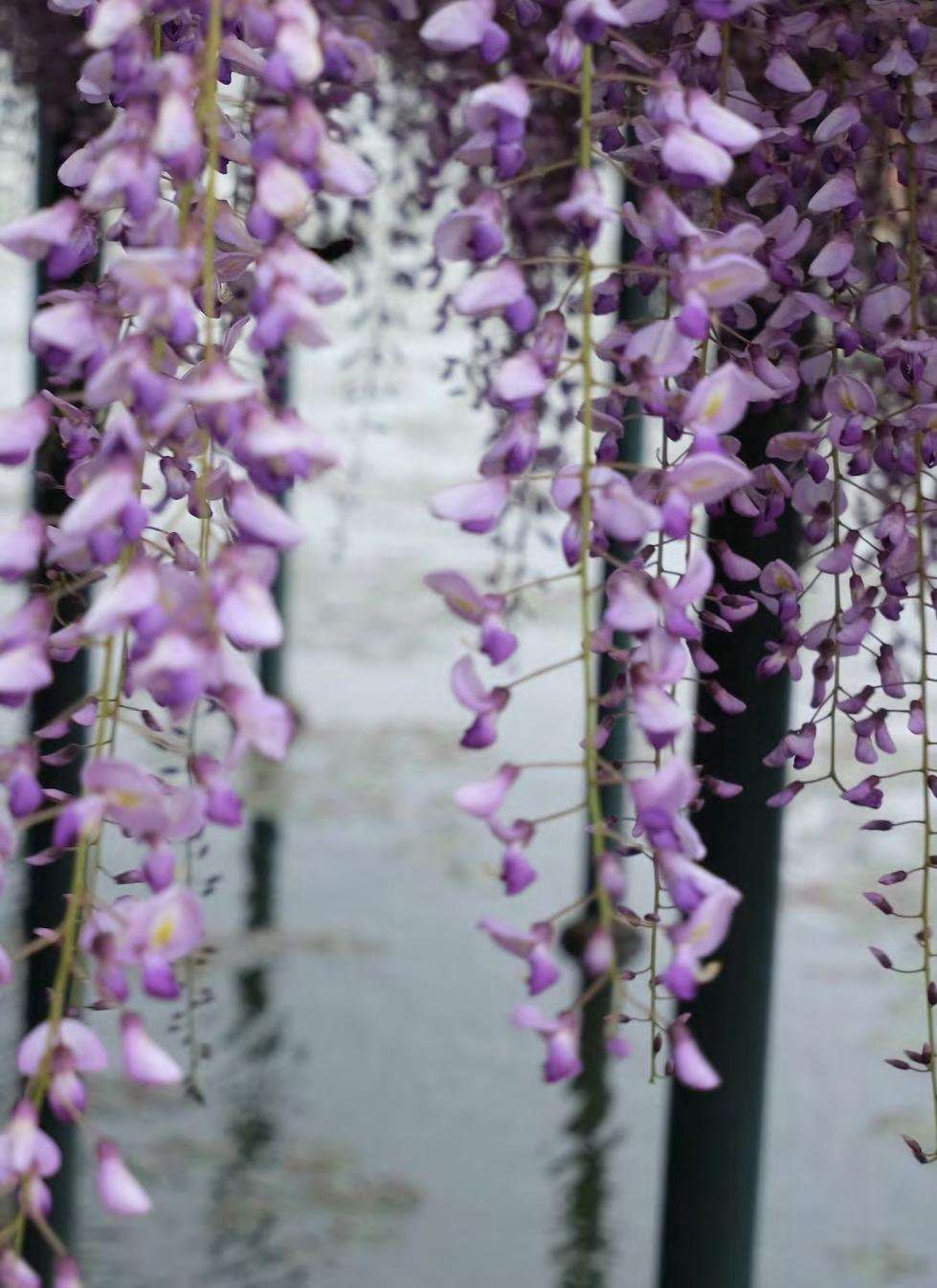
In-person races are back, and I am ready!
Etienne van Rooyen (Aomori)

My phone buzzed. It was a message from my regular group chat informing me of the news that would change my final few months on the JET Programme.
“It looks like the race is on this year,” Andy wrote.
“About time!” I quickly wrote back.
“This is your chance to finally do it. Are you going to run it?” Ben asked.
“Absolutely!”
The Hachinohe Umineko Marathon (which began in 1983) is a half marathon. For the uninitiated, a half marathon is 21.0975 kilometres or about 13 miles. Half marathons have become popular recently because of their balanced challenge/training requirement compared to the beast of a full marathon (42.195km/26 miles).

The course will start and finish in front of the former Hachinohe Fisheries Public Corporation at Tatehana Wharf. This is a beautiful race course as runners will follow the “Umineko Line,” a prefectural road that winds itself around many picturesque and famous locations like Kabushima Shrine, Ashigezaki Tenbodai Observatory, and many beaches. The course terrain starts on flat pavement and passes the ports of Hachinohe’s fishing district, known for mackerel and squid. From the 6 km mark, it becomes steep and hilly as runners run along the eastern coastline before reaching the halfway mark at Shirahama beach. After the halfway mark, runners make their way back along the hilly course passing each landmark again and three more water stations. Once runners reach Kabushima shrine again, the course flattens out ending where the race began at Tatehana Wharf.

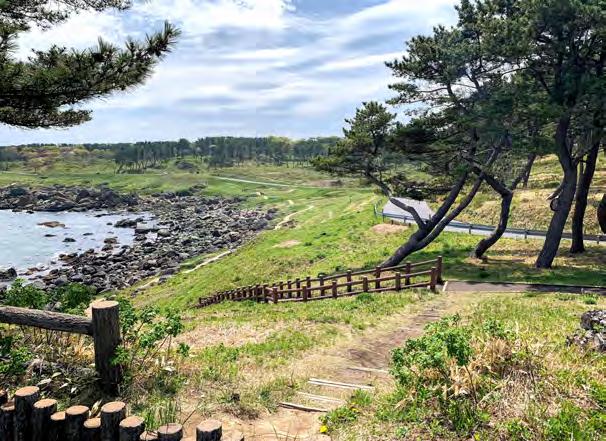
The 42nd Hachinohe Umineko Marathon National Championship will be on for the first time in four years, having been cancelled for three consecutive years since the 39th event in 2020 due to COVID-19. The event is officially sanctioned by the Japan Association of Athletics Federations (JAAF) and runs in partnership with the Daily Tohoku Shinbun and the Hachinohe City Athletic Association. The event will be on Sunday, May 21, 2023, starting at 8:10 a.m. (competition begins at 9:00 a.m.). The half marathon starts at 10 a.m. There are 21 categories for men and womenofdifferentagegroups,including the half marathon, 10 km, 5 km, and 3 km races on the course certified by the JAAF. Finishers’ certificates will be issued online with awards given out up to the eighth-place finisher in each category.


To preface, I have never run a half marathon before. The furthest I have run is about 10 km—and that was tough. Doubling that is terrifying! The first thing I did was turn to Google-sensei and type in, “How to run a half marathon?” After loading the first result, I was greeted with many training programs based on your athletic ability. Knowing your prior athletic and running ability is important when starting a training program. This is so you can know where to start, what your expectations are, how often you need to train, and how to prevent injury from overtraining.
For me, I am at an intermediate level in terms of fitness, but a beginner regarding running. So, alongside my regular gym sessions, I needed to be running consistently four to five times per week. I aimed for about 20–37 km each week.
Luckily, throughout my time on JET, I’ve lost a lot of weight and stayed active all year round. During the spring and summer, I hike and swim at the beach. During the winter, I ski and play ice hockey. Switching gears to focus on running is a challenge; running is in a completely different ballpark. I had 16 weeks to prepare. I started off by running slow with a heavy focus on cardio and long-distance pacing. I ran on the treadmill at the local gym or from my home to Kabushima shrine. During the first few weeks, I was averaging 4 km to 8 km per run. To supplement my runs, at home I did jump rope and a weekly beep test (shudder) to improve my cardio and breathing. I stretched after each run and focused on injury prevention by not overdoing it with frequent rest days. My diet changed too as I switched to eating more carbohydrates and vegetables to keep my endurance up.
Alongside the physical training, I had to develop a strategy as well. I had a basic plan to conserve my energy when running up the hills, recovering on the downhill, and pacing and racing on the flats. Based on my vice principal’s advice, I planned to focus on saving my energy until the halfway mark. Once there, I could increase my pace a little as other runners slow down. I also needed to become intimate with the course. I have driven/walked along it many times, but after testing out the first couple of hills that lead to the observatory from Kabushima, I was struggling. I was bluntly reminded of how steep those hills got.
Running is hard and lonely. There are days when I don’t want to run. Especially at the beginning of my training. There are great days when I ride on the high of hitting a new personal best! There are bad days when I can’t complete a section or keep pace when I normally can. Those ones are the hardest because afterwards, I have to say to myself, “Wait, what do you mean I have to do this again tomorrow?” Keeping spirits up is tough because the reality that you really are running your own race is crushing, inspiring, or both.
Winter didn’t help, either! Suddenly, it was much harder to get up and go for a run before work! The infamous Hachinohe ice and wind frightened me into staying in bed, especially during February and early March. Fortunately, the snow cleared, and the weather warmed, allowing me to hit the road again. Shortly after this, however, I got hit with a severe cold that threw my training routine out for about a week. On top of that, friends, travelling, and partying (it’s been three years since I last went to an enkai) snuck their way into my schedule.
Nevertheless, through consistency (and sheer will), my running got better. I kept pace easier, I was out of breath less, and I even, shockingly, started to look forward to putting on my running shoes and hitting the pavement. My friends, family, and co-workers (especially the vice principal) encouraged me every step of the way.
After four long years, the Hachinohe Umineko Marathon will finally take place. By the time this article is released, I’ll be in the final week of my training. It’s been a journey, but race day will arrive before I know it. My goal is not to win. Hell, it’s not even to make it into a top finishing bracket. I simply want to prove to myself that I can do it. Long-distance running is not my forte. I can handle skiing, hiking, or anything else, but running a half marathon is a challenge for anyone to undertake. Let’s hope I’m up to the challenge!
Look out for part two of my running adventures later this year!
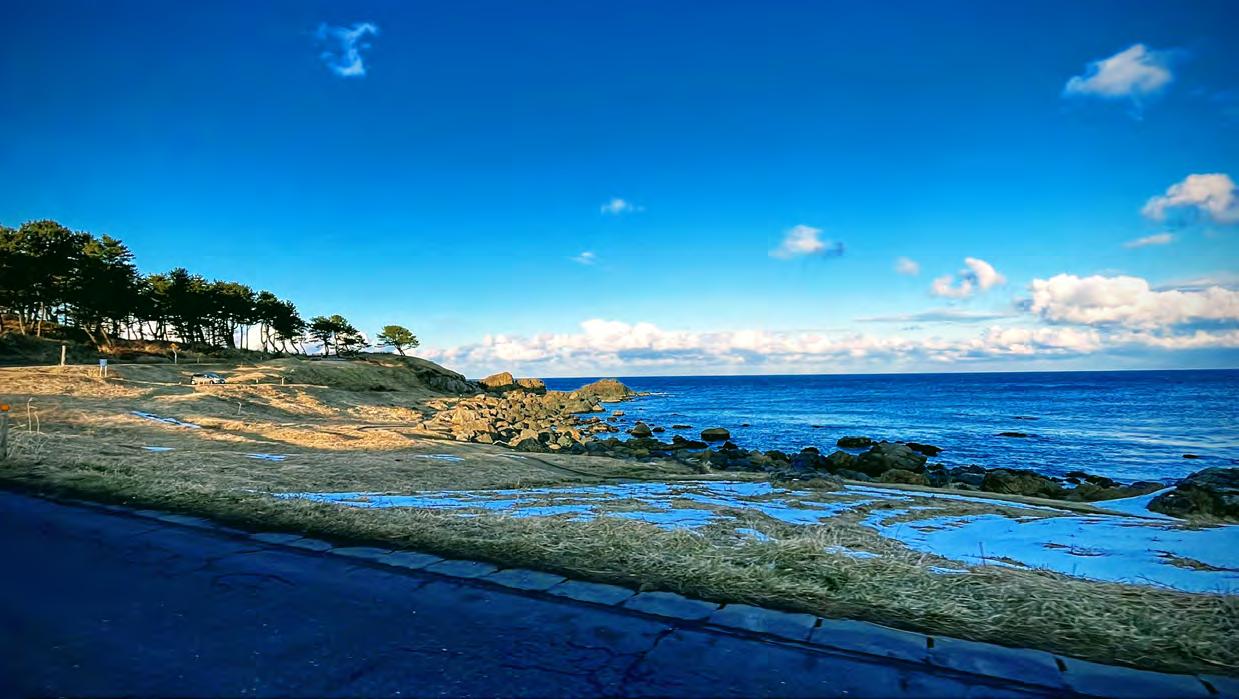
-I followed the link to a site called RUNNET. Here, you can find information and applications for running events across Japan. Keep in mind, some of the larger marathons in Tokyo, Kyoto, and Osaka require a lottery and go through different websites.


-For other great resources for races in Japan, try Gaijinpot and Japan Running News.
-Find the best training programme for you and your body’s capabilities!
-Fuel yourself with proper nutrition and stay hydrated for the best results.
-Do NOT push yourself too hard. Avoid injury, and stay positive and consistent!
Etienne van Rooyen is an Australian, fourth-year ALT in the delightful city of Hachinohe, Aomori. He spends his time practising the piano, gaming, or travelling Japan while improving his amateur photography. He regularly contributes translations of tofu recipes for the prefecture’s online blog “Good Morning Aomori” titled “Miso Hungry.”

Monica Hand (Ehime)
Dealing with the daily challenges that come with moving or living in a foreign country can weigh heavily on the mind and body. While I have always enjoyed going to a gym, my relationship with outdoor running changed dramatically after I moved to Japan. The first few months or so, I was overthinking, having trouble sleeping, and feeling insecure. Then, my friend suggested I go for a run since the weather was nice.
Photo by Venti Views on UnsplashTurns out, after a long day of being confused in most conversations or feeling a tad foolish in the classroom, a good 30 minutes or so outside sweating is just what I needed to quiet my mind and feel refreshed. Of course, this shouldn’t have been a surprise considering all the research behind running and exercise, but I had never considered running would be my “thing” while living abroad.
So, how did I make the ever-dreaded run my best friend? It wasn’t always easy, and it was often pretty awful. But I made a list of four tricks I picked up for when I need to convince myself to get out and enjoy the run.

Every time I went on a run, especially on days I’d rather have been in bed, I’d give myself the goal of 10 minutes. In these 10 minutes, I was not allowed to stop or change my pace dramatically. And when that ten minutes was over, I realized it wasn’t that bad, or at least that it could have been worse. Then, once I got used to running those 10 minutes, I started following it up with another 10.
Your small goal can be anything! Running to a specific landmark on your course without stopping, running to the end of your favorite song, anything! And if at first it doesn’t work, don’t be afraid to try something new.
Another trick I use when I am questioning this sadistic practice is promising myself a little treat of some kind. Sometimes it’s an actual treat like some snack from the convenience store, but more often than not it is that the next day will be a rest day without exercise.
Maybe that sounds counter-intuitive, but it works for me and my usual lethargy. Remember, this list isn’t about how to get into the best shape of your life; it’s just about how to convince yourself to go run and improve your mental health.
Whatever your prize is, make sure you remind yourself how much you deserve it. Even if the run didn’t go smoothly, it is important to recognize the effort you are putting into yourself.

By this I don’t mean you need to be clearing your schedule for a run. What I mean is that you have to find a time that works with your schedule. I tried the early-morning run, midday run, evening run, and everything in between. Some just did not work for me. As much as I wish I could be a morning runner, I have a much better time in the late evening.
Everyone works differently, and everyone’s schedules are cluttered. Don’t beat yourself up because you can’t go for an hour-long run everyday. If you can fit a 20-minute block of outdoor time, then go for it. Finding the time to run shouldn’t be a thing to add to your stressful to-do list.
For a long time, I was stuck in a rut of just going around the same few blocks near my apartment. While this is a handy route when I am short for time, I have started going farther away for my outdoor runs to change things up and make it feel more like I am exploring.
For me, I have three or four solid courses of varying length that I choose from based on time and desired workout. One course I somewhat lovingly call “The StairMaster” because I have it going up and down a lot of the staircases for crossing intersections. This is a great one when I don’t want to deal with a leg day at the gym or just need an extra kick in the butt (literally).
But I also have routes I do when I feel lazy and just want something quick or when I need an extra serotonin boost and want a nicer view. Don’t underestimate the power of a nice view, because even if you just walk the route, the view can help lift you out of a funk. A scenic run can be a great incentive.
Though these tricks may not be what makes running click for you, I hope it helps as you run through the challenges. Don’t be afraid to try new tricks, and always remember there is no bad run.
Monica is a second-year ALT based on the rural and lush Shikoku island. She loves rocky shore lines, salty popcorn, and a juicy plot twist.



I come from a town in Southern California where you can find virtually any baking ingredient all in the same aisle right at the local grocery store. When I tried to find the same ingredients in Japan, I was often sorely disappointed or incredibly lost. Where’s the sugar? The spices I need? Wait, do they even sell dark brown sugar? What do you mean, they don’t have evaporated milk? And what’s the difference between “strong” flour and “weak” flour?
It took me a lot of time and a lot of Googling to get my bearings. While I cannot provide a comprehensive list of substitutions for all baking ingredients, I can discuss a few useful substitutions in regards to one of my most challenging recipes to localize: pumpkin pie.
Background by tajulislam12 | Vecteezy.com

If evaporated milk, or エバミルク(eba miruku), is sold in Japan, I’ve yet to come across it. Mind that “evaporated milk” is not the same as “condensed milk,” which is much sweeter and cannot replace evaporated milk. You can make your own evaporated milk by carefully heating 2 1/2 cups of whole milk on the stove until it reduces down to 1 cup, but it is messy and time-consuming.

Then someone told me coconut milk is a fantastic substitute, and it changed my world. You can find 15 oz cans of it at so many supermarkets in the curry section or at international stores like Kaldi, often conveniently labeled “coconut milk” in English.
Not to be confused with “coconut cream,” which has a higher fat content and is thicker than coconut milk. I’ve not used coconut cream for any baking recipes, so I can’t say that it will work in place of evaporated milk, but it’s worth experimenting with, I suppose.
Coconut milk is also a good non-dairy option to replace heavy cream (aka “double cream”) in other recipes. There are also soy or oat options available in some supermarkets.
If you are looking for “Reddi-Wip” style whipped cream (the kind that comes out of a pressurized can), you can find it at some international markets, get a gigantic can at Costco, or try seeking out small cans tucked away in the cheese section at some major supermarket chains like Belc.


Canned pumpkin puree is so readily available year-round in the U.S. that I took its existence for granted, so I had to get really creative in Japan. While, yes, Japanese pumpkin, aka kabocha, is a perfectly fine ingredient for pumpkin pie, I wasn’t entirely satisfied. Japanese kabocha has a slightly different flavor to me, and it has a higher water content, so you have to strain out some of that water if you plan to use it for pie.
Sometimes if I’m lucky, I can find orange pumpkins at Costco. Now, if you’re going to use an orange pumpkin at all, you specifically want a pie pumpkin. Pie pumpkins will generally look small and round with a smooth surface. Big, orange “jack-o’-lantern” pumpkins are less sweet and therefore less ideal for pies.
Fun fact: American pumpkin pie recipes traditionally used butternut squash, aka ピーナッツかぼちゃ (peanut kabocha), which can be found at some supermarkets in Japan, but it is elusive as all hell. In my experience, I’ve only managed to find butternuts at a single specific supermarket in my area and only during the months of July through October.
If you do happen across butternut squash, you best buy that sucker quick. If you want to save it for the fall or winter, be sure to wash and store it in a cool, dark, dry place. I kept my butternuts in my closet, some of them in root vegetable bags (see more storage tips here). Properly-stored butternuts can last up to six months!
To make pumpkin puree, I follow this recipe, but you can Google “pumpkin puree recipe” to find your own. Note that you will need an adequately-sized convection or toaster oven and either a food processor, blender, or a potato masher. I prefer using a hand-held potato masher; it’s less messy and requires less water.

In many of her baking recipes, my grandma always used Crisco vegetable shortening. Though Crisco isn’t sold in Japan, vegetable shortening definitely is! It is usually labeled in katakana as ショー トニング (shootoningu) and can be found in either the baking section or by the flour at most supermarkets. Unsalted butter can also work, but it has a slightly different consistency. I find that shortening yields better pie crusts.


If you are used to simply choosing between white granulated sugar, brown sugar, or dark brown sugar (which typically contains molasses in the U.S. and U.K.), you might be a bit daunted at first. There are two kinds of white sugar that I’ve used in baking: 白糖 (hakutou) and グラニュー糖 (guranyutou), often found in the tea and coffee aisle. グラニュー糖 aka “granulated sugar” is my preferred choice, but both kinds are suitable for baking.
For brown sugar, your options will be a bit different. 三温糖 (sanontou) is a light brown sugar made from caramelized white sugar, but it works just fine. If your recipe calls for dark brown sugar, you might add extra molasses to get the right color. Another good substitute for dark brown sugar is a dark, unrefined sugar called 黒砂糖 (kurosatou). It more closely resembles dark brown sugar from the U.S. even if it’s processed differently.
Molasses (aka “treacle”) is sold in Japan, but it can be a bit tricky to find. Thankfully, black syrup or 黒みつ (kuromitsu) is very common and serves just fine.
If you intend to do any kind of baking, it is important to use the right pans or tins for your purpose. Actual full-sized pie tins are virtually impossible to find, even online, in Japan. Note that pie “tins/pans” and pie “plates” are two completely different things (ask me how I know). You will have to order them from your home country, or better yet: bring them yourself.
For regular cakes or breads, you can usually find tins at Daiso or other similar stores, but be aware that the sizes run pretty small. Be sure to adjust temperature and cooking times, and keep a close watch so that your baked goods don’t burn. Daiso also has other useful baking tools including measuring cups and spoons, spatulas, whisks, baking paper, scales, etc.
Now that you have learned a few localized substitutions for baking ingredients, let’s put them to use!
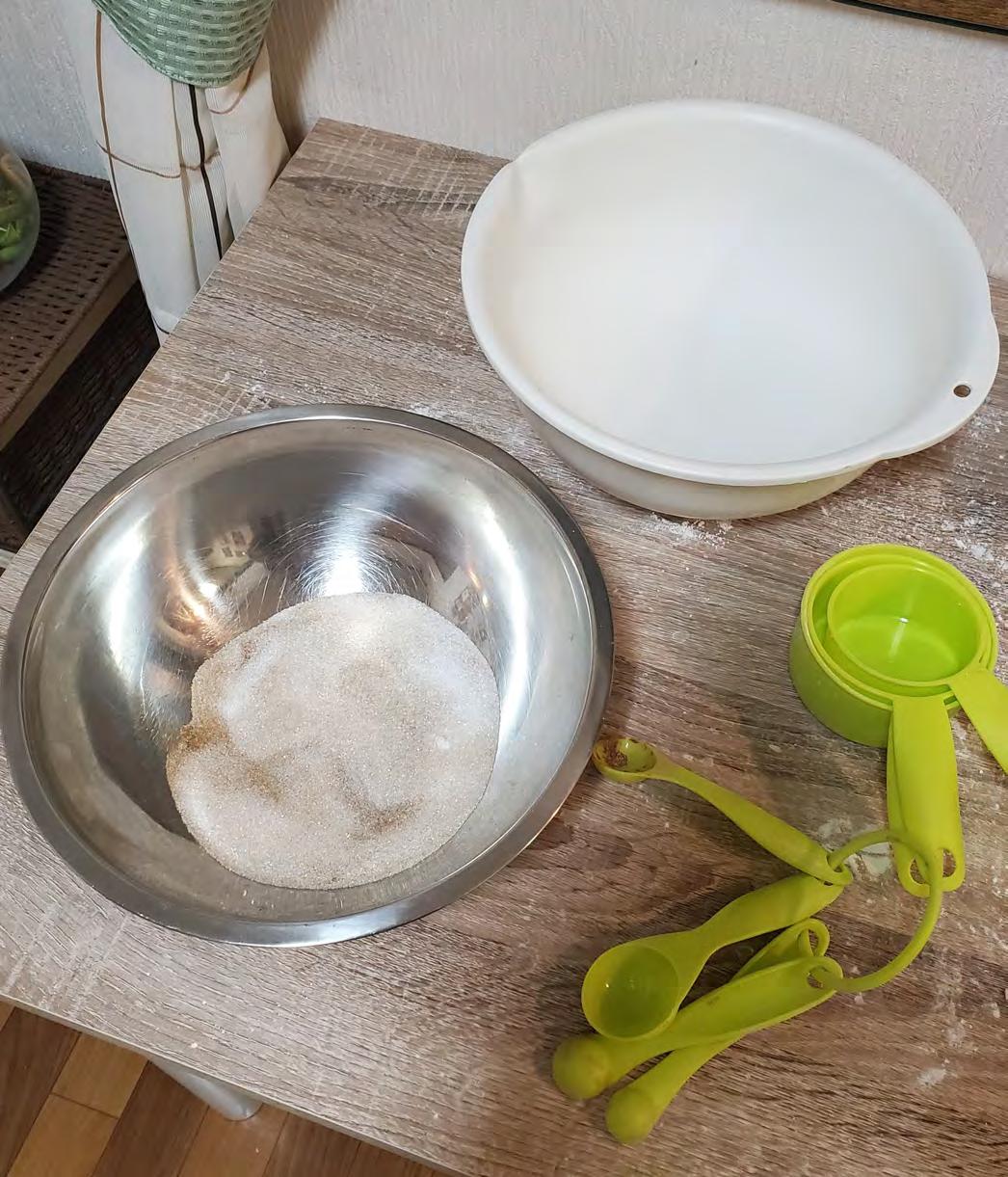



Ingredients:
• 1 cup all-purpose or “weak” flour (薄力粉 / hakurikiko)
• 1/2 teaspoon salt
• 1/3 cup vegetable shortening
• 2 tablespoons cold water
Directions:
Combine flour and salt in a medium-sized bowl. With a knife, cut the shortening in with the flour mix until it looks crumbly. Little by little, sprinkle in water and combine until the mixture holds together well enough to roll out.

Prepare two sheets of parchment paper, sprinkle flour on the bottom sheet, place the dough ball in the center, sprinkle with more flour, then lay the second parchment sheet on top. Using a rolling pin or wooden roller, roll the dough flat to about 1/8 in (1/3 cm), sprinkling more flour as needed.
Remove the parchment paper on one side, place a nine-inch pie tin face-down on the dough and flip it so that the tin and dough are right-side up. Remove the other sheet of parchment and carefully press and shape the dough into the tin, creasing the edges with your fingers.


Set aside.




Ingredients:
• 3/4 cup white sugar
• 1 teaspoon ground cinnamon
• 1/2 teaspoon salt
• 1/2 teaspoon ground ginger
• 1/4 teaspoon ground cloves
• 2 eggs
• 1 3/4 cups pumpkin puree
• 1 1/2 cups coconut milk
Directions:
Combine sugar, salt, cinnamon, ginger, and cloves in a small bowl. Lightly beat eggs in a large bowl. Stir in pumpkin and sugar-spice mixture. Gradually stir in coconut milk.
Pour into a pie shell and bake at 210 C for 15-18 minutes.
Reduce heat to 170 C and continue baking for 50-60 minutes or until a knife inserted in the center comes out clean. Let cool for two hours and serve immediately or refrigerate. Yields 10 slices per pie. Best served with a dollop of whipped cream.


Dianne is a fourth-year ALT and CONNECT’s Assistant Head Editor, who is happy to share the baking know-how she learned from her “Grammy,” who passed away in March 2022. Her pastimes include manically hoarding five butternut squashes in her closet, writing books about bird people, and drawing comics (also about bird people).


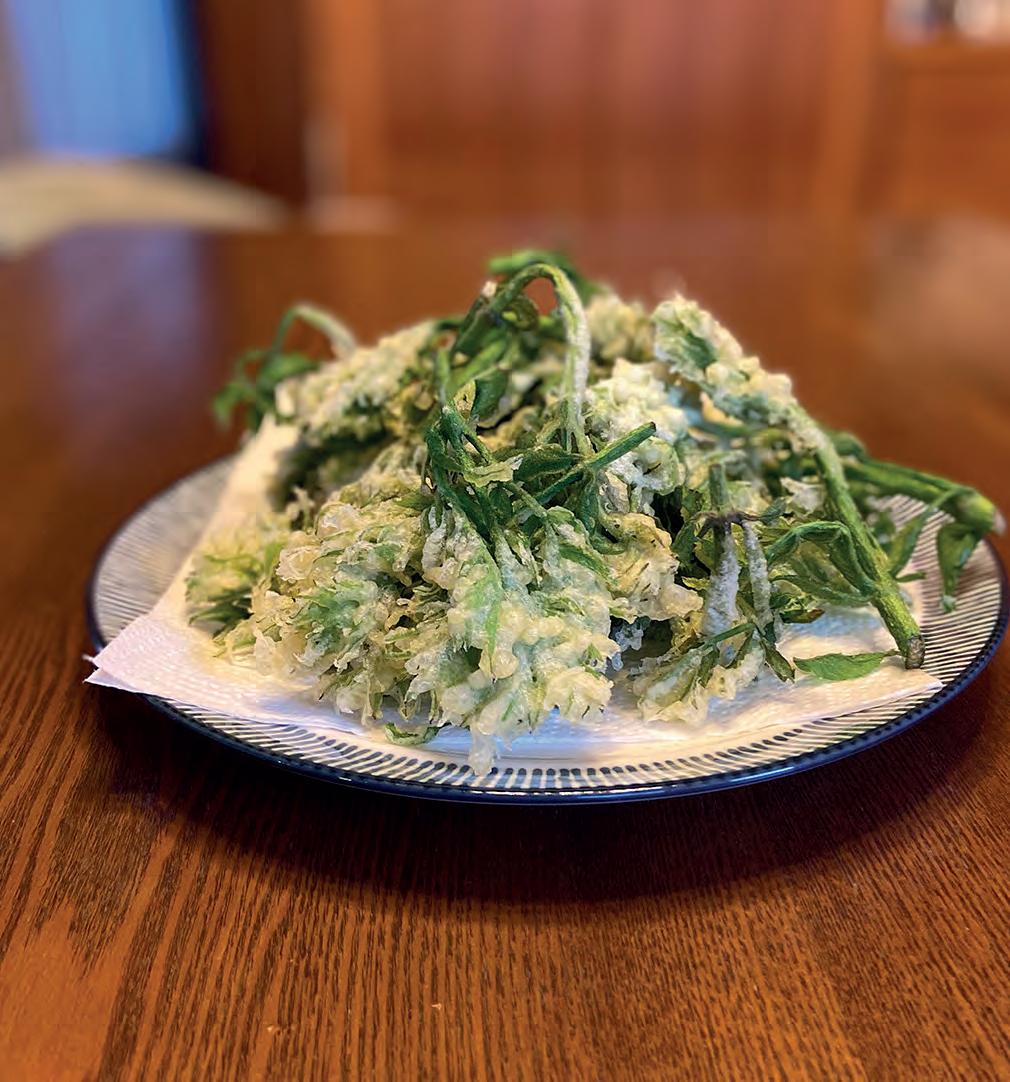

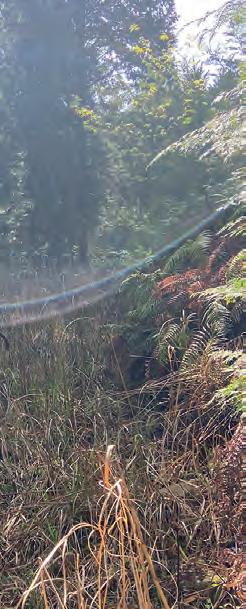
Monica Hand (Ehime)
Bumping along in four-wheel drive, we climbed higher and higher up a steep mountain road in rural Ehime. The early morning air was damp, crisp, and earthy and the forest around us was bursting with green. The conditions were perfect, and once parked and armed with hooked canes, gloves, and foraging bags, we set out on the hunt. Ignoring the many mushrooms, we scanned the tops of slim trees, searching for a pop of green and the promise of delicious taranome
Background by Rezza Anggita Putra | Vecteezy.com



Taranome is a popular sansai, or mountain vegetable, that grows throughout the country but only appears in the spring season. It is a sprout that grows from the wood of a young Japanese angelica tree (binomial name Aralia elata), its green stem shooting off from the tree’s woody base as new segments and branch growth. Though a small sprout, the taranome is beloved as much for its taste as for its nutritional value; boasting nutrients like potassium, calcium, and iron.
Like with other spring-specific sansai (e.g. bamboo shoots and warabi shoots), harvesting the wild sprout is typically a pastime of older generations in Japan’s rural regions. Knowing where to go, and getting there first, is all part of the challenge. This seems particularly crucial for the taranome because of its popularity and the fact that each tree only produces one or two sprouts. And of course, as with any foraging, it is recommended to go with a guide or someone who knows their plants. Especially as the taranome can easily be confused with a very similar looking, but quite poisonous, yamaurushi
Luckily, our guide, a teacher at a local high school, knew just where to go and how to avoid any mix-ups. He taught us that the best way to tell the difference is that the safe sprout is guarded by the angelica tree’s prickly, woody thorns (hence the need for gloves). Meanwhile, the poisonous yamaurushi offers sprouts from smooth, inviting bark. As always, nature loves irony.

With all that in mind, we wandered and stumbled through the forest, calling out to each other through the thicket. Then, once a taranome was spotted poking out in the tree line ahead, and inspected to ensure it was not its poisonous cousin, we went to work harvesting. We used the canes (just a long branch with a hooked end) to latch onto and gently bend the thin tree. This brought the top of the tree, where the new sprouts grew, down to where another one of us stood waiting. Once it was to a reachable level, just a simple twist was enough to pluck the green gold.


Though the process was simple enough, we couldn’t harvest every taranome we found. Some of the trees were too tall or thick to safely bend down without harming the tree. Others were positioned on such a steep incline that it was impossible to get the right angle. We left these behind in hopes some future forager would be clever enough to find a way to harvest them.
But, in the end, we still ended up with two large bags full of taranome sprouts, ready to be eaten.

While the lengths of the taranome we plucked varied, the ideal length is between three and six centimeters. The longer they are, the less ideal the texture as the growing plant becomes thicker and stronger. The ideal taranome has a tender base and a cluster of leaflets.
In South Korea, the same plant is cooked in various ways—pickled, blanched, sauteed, etc. But in Japan, the taranome sprout is mostly seen as a specialty tempura dish. Since the taste is subtle and earthy, it pairs perfectly with tempura’s light batter and a sprinkle of salt or dipped in tentsuyu, the tempura dipping sauce.
Whether bought or foraged, you can prepare your sprout for tempura by washing thoroughly, peeling away the larger leaves, and chopping off the hard bottoms. The small, feathery leaflets are the best part, as they add an extra crunch to the already



crisp tempura-fried texture. For a lighter taste, dip only the leafy end of the sprouts in the tempura batter before dropping into the pan of oil.
We feasted on the tempura alongside other seasonal and traditional dishes, but the plate of taranome was first to be devoured. The delicate taste and satisfying crunch was addictive, and my chopsticks couldn’t help but to go back for more. Then, dipping the sprout in the mixture of tentsuyu and grated radish was a delightful mix of flavor and textures I hadn’t realized I was missing.
Even after just one meal, it was easy to see why it’s often called the king of sansai. A limited season makes it a fleeting treasure, a taste so subtle and earthy that it fits perfectly with Japanese traditional cooking, and a smell so fresh that when cooking, the whole kitchen smells of spring. Taranome is truly a spring icon.
Monica is a second-year ALT based on the rural and lush Shikoku island. She loves rocky shore lines, salty popcorn, and a juicy plot twist.



LANGUAGE EDITOR connect.ajet.language@gmail.com
Pitta-Gay Powell
“Nobody wins an argument.” — Dale Carnegie, from How to Win Friends and Influence People
LANGUAGE DESIGNER
connect.ajet.assistantvm@gmail.com
Emily Griffith
“You’re only here for a short visit. Don’t hurry, don’t worry. And be sure to smell the flowers along the way.” — Walter Hagen

COPY EDITOR
connect.ajet.copy2@gmail.com
Sage Olges
“Si vis pacem, para bellum. If you want peace, prepare for war.” — Winston, from John Wick: Chapter 3 - Parabellum
Photo by Susann Schuster | Unsplash.com
Vector by Graphics RF | vecteezy.com


Background by Anang Putra Hermanto | vecteezy.com


I’m not the pheasant plucker. I’m the pheasant plucker’s son. And I’m only plucking pheasants till the pheasant pluckers come.
No, I’m not going to ask you to repeat it three times. Once is enough drama. With a natural pace, it should take about five seconds to say both sentences. Try bringing it down to three seconds and then involve another unsuspecting victim . . . I mean friend . . . in your tonguetwisting shenanigans.
If this tongue twister goes how I expect it will, you will find that this one is not for the classroom, but many students will love the fun of this kind of linguistic gymnastics.
Tongue twisters are sentences made of several words with the same initial sounds. They depend heavily on the figurative device alliteration. Not only are they difficult to articulate because they require the brain to switch the shape of the tongue superfast, but they require the tongue to consecutively alternate between sounds that are barely distinguishable from each other
The short answer is because they are fun. But, outside of that super important component, tongue twisters offer lots of benefits to a language learner
Tongue twisters provide muscular exercise for the tongue. Who knew our tongue needed exercise? This exercise strengthens the parts of the mouth that are actively engaged in speaking. The result
is greater skill in articulation, and good articulation leads to good pronunciation prowess.
Tongue twisters also help students to become more cognisant of phonetic variations that affect meaning. Through tongue twisters, students learn the distinctions between homophones (words with the same sound), homographs (words which look the same but may sound different), and homonyms (words that may look and/or sound the same but mean different things).
Well, anyone in the teaching/learning process can use them. However, since they are highly recreational, I suggest using them at the earlier stages of second language learning.
There is no one-size-fits-all answer to that question. Tongue twisters are versatile and their uses varied, depending wholly on the creativity of the instructor. I will, however, provide some ideas as to where to start.

Imagine your students guffawing at the very beginning of your lesson. That’s very likely what would happen if you used tongue twisters as a warm-up activity. Even if students aren’t yet sure of the meaning of the tongue twister, they would definitely have fun reading and trying to repeat it quickly. Imagine what this warm, tongue twisting, atmosphere full of laughter will do for student engagement for the rest of the lesson.
If you ever have to teach any of the grammatical concepts mentioned before—homophones, homographs, or homonyms—this activity is pretty useful. Tongue twisters can also be used in part of speech differentiation. As an added bonus, it increases vocabulary and provides the opportunity for students to actively practice saying sentences structured correctly, according to the grammatical rules of target language.
Here, learning can be facilitated implicitly. Trying to get the tongue twister right over and over is a laughing matter for kids, but to some degree, it may unconsciously act as a blueprint for their own target language sentence creation. Students don’t have to know they are learning to actually learn.

All English teachers want second language learners to practice speaking the target language outside of the classroom, but most are at a loss as to how to get them to do that. Using tongue twisters as a get-out-of-jail-free card is one way. Students could be provided with various tongue twisters via the teacher’s means. I would make use of the class’s notice board or the English board. If students learn the
tongue twister of the week, they can opt to use it to dodge a question within the class and have it passed to another student.

This activity’s success is dependent on the type of atmosphere that exists between and among a teacher and the students. We must accept that sometimes students don’t know the answers to questions asked, and displaying increasing speech prowess instead of being embarrassed for not knowing an answer to a question is a win. This also means that teachers will have to update the listed tongue twisters weekly, perhaps.
Let me help you out. Two of the most popular tongue twisters involve Betty Botter and her bit of bitter butter, as well as Peter Piper who had an affinity for picking and losing pecks of peppers. I find these particularly cliched, but there are hundreds, if not thousands, of others online. Still, I went searching and I chose two tongue twisters I felt most suitable for the average younger Japanese student.
If two witches were watching two watches, which witch would watch which watch?
A skunk sat on a stump and thunk the stump stunk, but the stump thunk the skunk stunk.
Pitta-Gay is an ALT based in Ehime currently pursuing a master’s degree in Curriculum and Instruction. In her not-so-spare time she creates workbooks for children. She enjoys appreciating nature from a respectful distance, as well as sleeping like life depends on it.
This month’s language corner is an ode to the mimetic or onomatopoeic expressions of the Japanese language. These expressions sound like the thing they are describing to some degree— whether it be an actual sound or a feeling. This is a corner of the language that I have come to know and love for several reasons. For starters, these sayings make learning the language
fun. It is a great way to supplement the usual textbook work.
But simply, when used in daily life, they spice up conversation and never fail to impress a native speaker. Once you start listening for them, you’ll hear them everywhere, too.
While this part of the language is vast and varies greatly, this brief list (written in katakana for ease) is a simple introduction to get you started.
ペラペラ, pera pera, fluent in a language (often accompanied by the ever-dreaded jouzu)
ギリギリ, giri giri, at the last minute (for example, an assignment turned in just before deadline)
ドキドキ, doki doki, nervous, meant to sound like a racing heart
ピカピカ, pika pika, bright or shining/sparkly (easy to remember if you know Pikachu)
ピリピリ, piri piri, tingling or painful (sometimes used for spicy foods)
モリモリ, mori mori, bursting with energy
プリプリ, puri puri, squishy or fat
サクサク, saku saku, crunchy or crisp (you will often see this on bags of chips!)
ギンギン, gin gin, wide awake or full of energy
クタクタ, kuta kuta, extremely exhausted
ハラハラ, hara hara, falling steadily one by one (this is sometimes used for petals, tears, or rain)

Keep in mind some of these can have even more meanings or uses based on different contexts!
Japanese Onomatopoeia: The Guide
List: onomatopoeic or mimetic word - JapanDict
Japanese Onomatopoeia: Guide To Mimetic
Words, Manga + More
Photo by Dan Suzuki | Unsplash.com
TRAVEL EDITOR connect.ajet.travel@gmail.com
Chloe Holm
“The life you have led doesn’t need to be the only life you have.” — Anna Quindlen
TRAVEL DESIGNER connect.ajet.assistantvm@gmail.com
Emily Griffith
“You’re only here for a short visit. Don’t hurry, don’t worry. And be sure to smell the flowers along the way.” — Walter Hagen
COMMUNITY EDITOR connect.ajet.community@gmail.com
Ryon Morrin
“Pui Pui.” — Potato, from Pui Pui Molcar
COMMUNITY DESIGNER connect.ajet.assistantdesigner2@gmail.com
Amy Ratcliffe “お疲れ様です”
COPY EDITOR connect.ajet.copy4@gmail.com
Jon Solmundson
“It’s not enough to give people what they need to survive, you have to give them what they need to live.” — Ekko, from Arcane
Photo by Susann Schuster | Unsplash.com
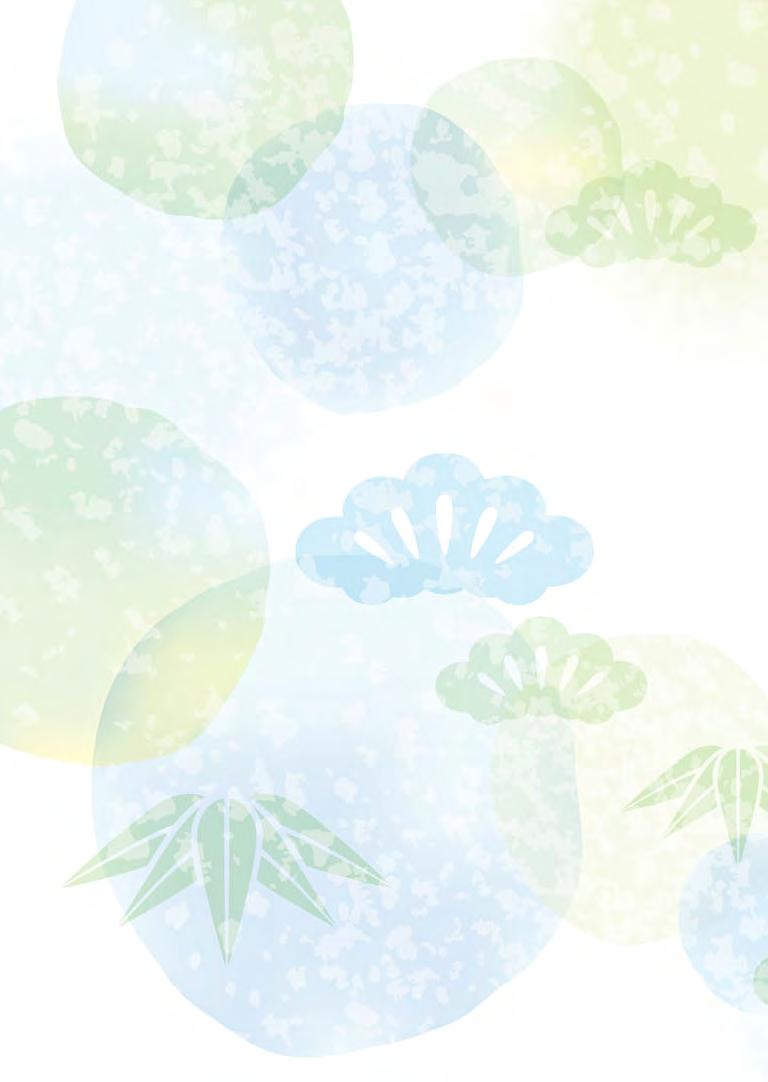


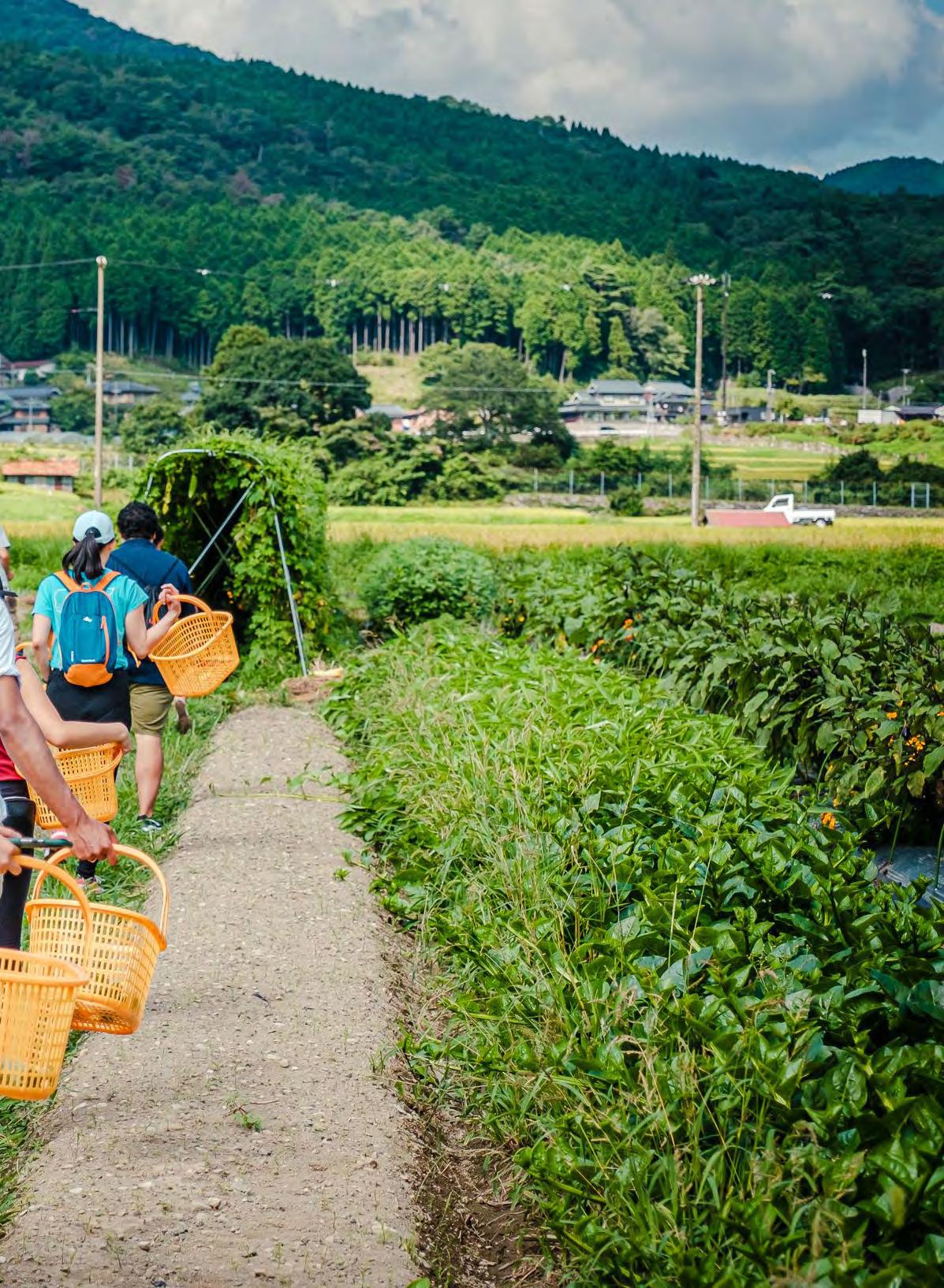 Thomas Coleman (Hyogo)
Thomas Coleman (Hyogo)
Quietly sitting in a small village hall deep in Japan’s inaka, an old television played the echoes of a bygone era. We watched in mesmerised silence. Dancing on the screen before us were the fond memories of a tight-knit local community in rural Hyogo Prefecture who had kindly invited us into their private space. Through our peephole into the past, we saw families working, living, and having fun together as well as upholding their special local traditions. It was a beautiful and intimate experience.
Yet, as my gaze drifted from the video and rested on the ageing faces and longing eyes of our warm hosts, I felt their deeper sadness. They were now both older and fewer. With the passage of time, their younger generations had been washed away with the tide of urbanisation, and now only a small nucleus remained. The contrast between the atmosphere in the video and the atmosphere in the room struck me deeply, moving me to tears.

It is no secret that the rural communities of Japan are shrinking. With bigger cities providing more opportunities, the slow bleed of people from the inaka is understandable but is becoming worryingly more evident. As a result of this creeping migration to urban centres and a declining birth rate, more than half of all municipalities have become classified as “depopulated” by the Japanese government. (1)
However, the deterioration of rural Japan is not a foregone conclusion. Our unique, emotionally moving adventure into this quaint rural village, filled with kind people willing to share their stories with us, was an eye-opening experience into the yet untapped value of the inaka. It was a small but impactful part of a greater initiative being pioneered by local tourist organisations who are looking to spread the word: Japan’s countryside still has an abundance of stories to tell if only you would come and listen.

In fact, many local government-backed projects are once again shining a light on the inaka’s hidden gems. Their goal? To stimulate interest, tourism, and investment in their rich histories and vibrant communities. Nowhere is this more prevalent than in Hyogo Prefecture.


With the popularity of nearby tourist hotspots like Himeji and Kobe further afield in the rural regions of Hyogo, local organisations have realised the need for creative solutions. As such, the local tourist industry in areas like Asago City in central Hyogo focuses on providing unique experiences through personal passions and novel thinking while remaining firmly rooted in local activities and traditions.

One such project, Asago Travel and Stay, promotes innovative tours of the wonderful rural area surrounding Asago and hopes to turn the tide for its communities. I, along with a lucky group, took the opportunity to join one of these guided tours in August 2022 and we became illuminated to the importance of rural Japan and the growing need to protect and rejuvenate it.
The tour thrust us into the often overlooked heart of Hyogo. It allowed us to trace the excitement of the past via the routes of the iconic Ikuno Silver Carriage Roads, invited us to take part in local customs in both farming and cooking experiences with Asago residents, shared with us the area’s brewing affinity for the modern with a trip around Tataragi openair art village, and allowed us to become one with history through lodging offered by Ikuno Stay in one of Japan’s oldest Meiji-era company housing complexes turned museum.
While these experiences are already enough to demonstrate the impressive variety and dynamism of the inaka, there was a further interesting twist: We would be travelling from adventure to adventure on e-bikes. One of the organisations comprising the project,

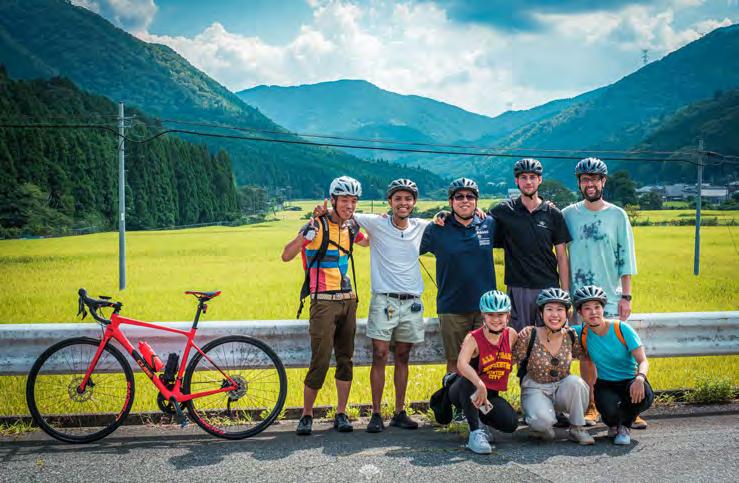

Asago Cycling, has moulded their zeal for bicycle travel to their plentiful landscape in order to connect the spread-out but equally splendid locations of rural Asago. Providing us with locally-based guides and skilled photographers, they helped ensure our immersion into one of Japan’s secret treasures.
As a man who is not naturally athletic, I was initially sceptical at the idea of cycling around the countryside. But, after clear coaching from our guides and receiving adequate safety instructions, the e-bikes made for a comfortable and relaxing ride with their electrical propulsion and simplicity of design.
The e-bikes also deepened the tour group’s relationship with our environment and with each other. Using e-bikes we could freely traverse Asago, feeling the warm sun and cool breeze as we passed through small villages and gentle inclines in the flourishing scenery. Not only this, but the ease with which we could stop and soak in the charming sights only heightened our interaction with the inaka. Further, sharing this unfamiliar yet exciting experience with others made the tour all the more energising and enjoyable.
The final stop of our trip, and the beginning of this article, brought us to the village of Sanaka to meet with local residents at their community hall and to hear their stories. This moment grounded
our tour in the reality of this picturesque and welcoming environment. While we had discovered the attractions and joys of the inaka, we were reminded of the greater need for eyes on and interest in Japan’s rural spaces; the countryside’s hidden gems remain under threat without tourism and the investment in its communities that follows.

One moment in particular during our time in Sanaka village that highlighted this situation to me was our visit to the locally dubbed sennenya or “Thousand-Year-Old House”. The large old building holds a special place in the hearts of the residents and sits symbolically in the middle of the settlement, next to the village hall.

Blending pleasantly with the lush green vegetation, its mellow white walls, brown wooden panels and wavy grey roof tiling slot harmoniously into the pastoral landscape. After talking to residents at the hall, we were led by a few volunteers down a quaint path to see their pride and joy. We followed a narrow stream on our left and an old stone wall looping around the perimeter of the Thousand-YearOld House on our right. The residents explained that while the house was old, it was not quite old as the name suggests, and it belonged even today to the family that built it all those years ago. The heir, however, now living in Tokyo and not knowing what to do with their charming inheritance, has left it be.
In spite of this, a newly thatched, triangular roof poked saliently over the old walls. Curious about this detail we asked our guides and they explained to us that the local community, tired of seeing the building slowly falling apart, had come together to raise money for its rejuvenation. The gleaming new roof was a result of their collective efforts. After giving us an extensive tour of the interior, it became clear that the tired walls, beams and floors were all still in need of the same vital care. Yet, within the room, we could distinctly feel an energy of determination among Sanaka’s residents and our guides from Asago Cycling.
For the residents of Sanaka, the fate of the house and the village itself now seems almost tied. Both geographically and socially, the sennenya is a central pillar of the local community. Not only does it represent their common history and circumstance in the face of modern challenges, but sennenya’s desperate need for attention and care beckons to a common solution. Sanaka village will not give up on its Thousand-Year-Old House because they will not give up on themselves. Consequently, they have also recognised the need for more tourism, partnering with the Asago Travel and Stay project so that more people can share the value of their village. I found their resoluteness inspirational, which, in turn, motivated me to pen this article.
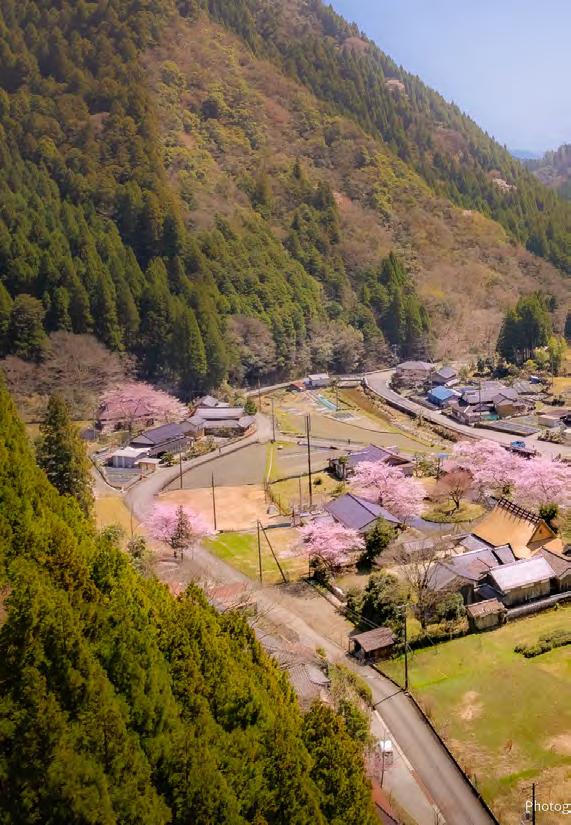
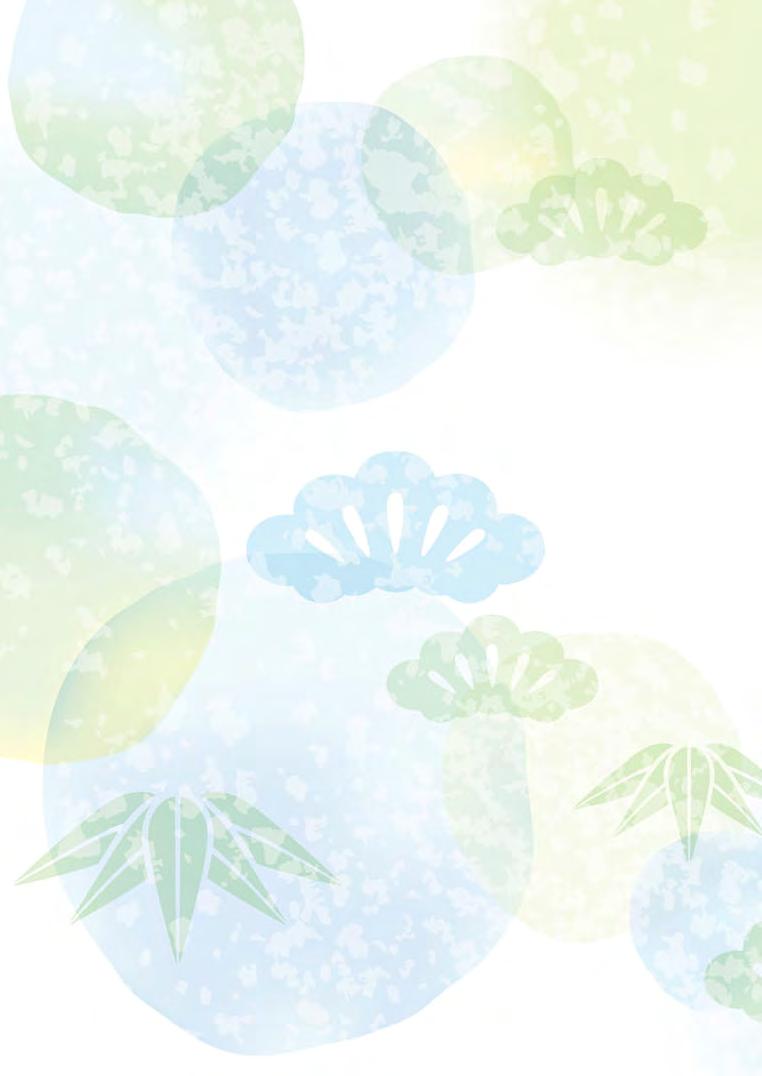
Sanaka village will not give up on its Thousand-Year-Old House because they will not give up on themselves.

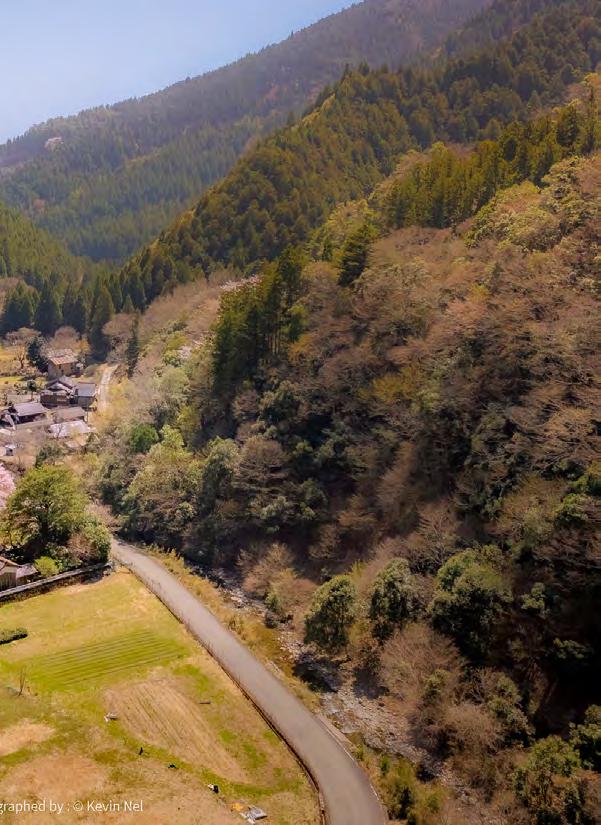

Since joining the tour in October, the success of Asago’s tourist organisations has continued as their impressive works have broadened. For example, Asago Cycling now has an expansive list of tours and a new cycling station in operation. It has also been awarded additional funding and assistance from the local government via the Hyogo Field Pavilion Initiative. This expansion shows the growing recognition of the important role that tourism provides for the local economy and the wider community.
Ultimately, the local endeavour at Asago City demonstrates the potential of Japan’s countryside. Its local communities’ commitment to revitalising their areas to produce a more attractive destination for tourists and the distinctive creativity of local organisations to promote their unique environments infuses their mission with great energy. However, this must be matched by a willingness of us, the tourists, to heed the inaka’s call to adventure. Because beyond tourist hotspots, there are equally as exciting experiences to be had, a variety of people to interact with, and an abundance of stories to listen to; in short, there is a rural world that’s both in need of and worth saving. As the summer months approach, why not consider having your own adventure into Japan’s stunning inaka?
1. “More than half of all municipalities in Japan defined as ‘depopulated’” ( The Asahi Shimbun)
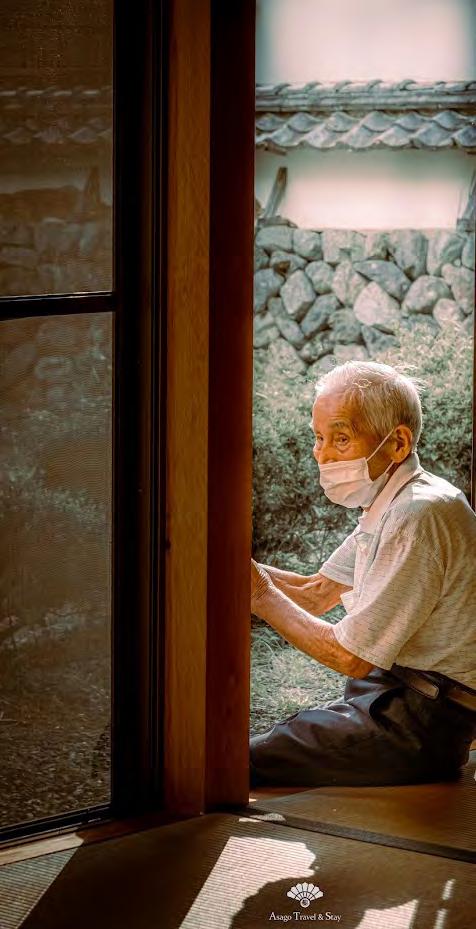
Background by Takeshi Ishikawa | vecteezy.com
Vectors by Dedi supriyadi | vecteezy.com

Thomas Coleman is a second-year ALT from the U.K. who is currently working at two senior high schools in Himeji. As a humanities graduate, he has a keen interest in history and culture and can often be found exploring local historical sites. When he is not doing this, he will be at his local dojo practising kendo or at home playing video games.


A look at local specialty agricultural products from around Japan .

Fukuoka Prefecture, located in the northern part of Kyushu, has a rich history that has produced plenty of amazing sights and many famous foods. If you ever have the opportunity to visit, I recommend trying their tonkotsu ramen and Umegae Mochi. We would be here all day if I tried to expound on Fukuoka’s virtues, so instead of that, I’m going to narrow my focus and talk about one thing that always gets me excited: strawberries.
Fukuoka is one of Japan’s leading strawberry producers, and their strawberries are renowned for being exceptionally delicious. Some Fukuoka farms even put significant resources into developing new types of strawberries, bigger and better than ever before. The Amaou strawberry, for example, was only invented in 2001, but already accounts for 13% of Japan’s total strawberry market—with exports to Taiwan and Hong Kong. With Fukuoka being the only prefecture legally able to grow them, they are a distinct staple of the region. Suffice to say, with all this research and effort put into their production, their strawberries live up to their reputation!
Well, now that I’ve hyped them up, where can you get these strawberries? Most commonly, you can buy them in the prefecture itself, but where’s the fun in buying them from a store when you can pick them yourself?

Yearly, starting as early as December and usually ending around May, many farms open their doors to allow residents and tourists to pick strawberries straight off the vine. These strawberries boast an impressive size, color, and taste, and come in many different varieties, depending on what the farm chooses to grow. At some farms, you can even pick white strawberries!
If you are interested in a strawberry picking experience, or you just want an excuse to eat as many strawberries as you can, I recommend checking out the Fukuoka Strawberry Picking Guide as a start to decide where to schedule your berry own adventure. It includes information on the farms, tips for strawberry picking, and links for where to schedule your visit! Just watch out—during the busy seasons, some farms can be completely reserved a month in advance.
Vector by Paul Leskovar | vecteezy.comLocated in eastern Hiroshima Prefecture, a small port town called Onomichi is home to one of the prefecture’s most cherished fruits— lemons.
Specifically, some refer to Ikuchijima Island (Setoda) in Onomichi as the origin of lemons in Japan. Although it is a small island, you can smell a lemon scent in the air during spring and spot lemon fruits growing all around in the summer and autumn. Because of that, it has earned the nickname Lemon Island among residents and visitors in the area (Setouchi). Lemons grown here are called Setoda lemons.
Whether exploring the area, searching for temples, or spending time near the ocean, it is hard to avoid lemons and their light citrus scent wafting through the air. Some lemon bushes grow around the bright and colorful Kosanji Temple in Onomichi.

Nearby gift shops sell lemon-shaped pastries filled with lemon jam for excellent omiyage or souvenir treats. Visitors can also buy lemonscented lotions, incense sticks, and other items to enjoy their scent.
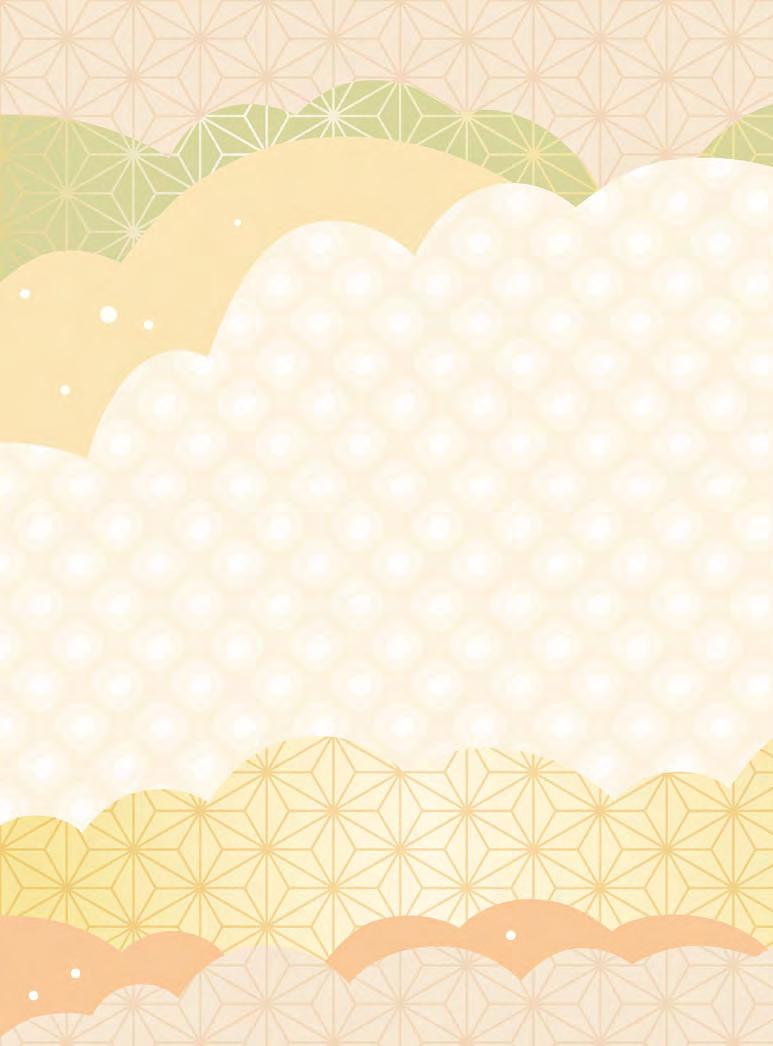
To this day, Setoda lemons are the preferred choice for local chefs, as they have a light aroma and are rich in nutrients. At a small café called Hyakkoya, you can purchase the cafe’s delicious, well-known lemonade and try other fun treats, snacks and sandwiches centered on this fruit.
Recently, Onomichi has campaigned to promote a unique twist on a popular Japanese dish—lemon nabe. As nabe is a Japanese hot pot dish, lemon nabe consists of a hot pot filled with seafood, vegetables, and—as the name suggests—lemons. You can safely eat the fruit and peels, and various visitors continue to share their positive responses toward the dish.
If you ever pass through eastern Hiroshima, you will not regret stopping at Onomichi for a break to check out how many lemon-centric goods and tasty treats the town has for everyone to enjoy.
Vector by md. tanbirul islam | vecteezy.com
 Veronica Neilson (Hiroshima)
Veronica Neilson (Hiroshima)
Living in Kaminoyama, Yamagata is like stepping into the greatest Japanese countryside fantasy—rice fields, surrounding mountains, a peaceful riverbank, the hourly JR-train, mom and pop shops, and cute neighborhood dogs. There you will find the gem of the Japanese countryside: the persimmon.

 Tiffany Aguilar (Yamagata)
Tiffany Aguilar (Yamagata)
Starting in the fall, persimmons, or kaki, thrive in Kaminoyama. All throughout the city, these orange ornaments hang outside. Honestly, it’s tempting to just pick one for yourself. But you can find them for sale anywhere, even in a little shack on the side of the street. On my walk home from work, there is an unmanned stand with seasonal vegetables, fruits, and flowers. Three persimmons are just 200 yen! All you have to do is drop your coins down an iron pole and walk away with your integrity still intact and a delicious seasonal fruit in hand.
Even though the fruits are totally affordable, I still feel lucky to have my own persimmon supplier. My coworker knew they were my favorite fruit, and we’d share them together on our breaks. Persimmons are meant to be eaten once they feel soft and squishy. If I had the patience for them to ripen, I would eat them just as they are, and if they aren’t ripe enough yet, I’d drizzle them with honey or add some plain yogurt and granola. Knowing that these fruits come and go with the fall season makes the experience perfectly bittersweet.
During my first fall in Kaminoyama, I nearly considered freezing the persimmons so I could enjoy them when I wanted. That was when I saw that persimmons are gifts that keep on giving. Once the peak season is over and winter makes its snowy debut, Yamagata transitions into the best display of fruit there ever was. Once nestled in trees, preserved persimmons are tied to hang on ropes, forming new skin, and becoming a new creation—dried persimmon! Hoshigaki is only available for a couple of weeks, so you need to make sure you treasure it if you find it. It’s chewy, sweet, and the most satisfying dessert. One day, you’ll find all these dried persimmons adorning the city (quite literally) like an early Christmas gift. If you blink, you may miss out and see that they’re all gone.
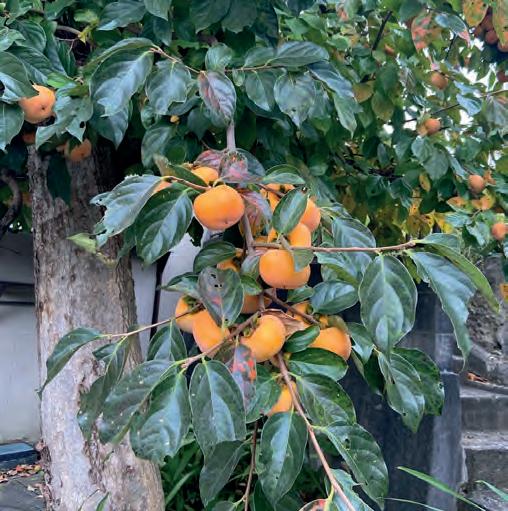
There is nothing quite as magical as admiring the autumn leaves and using a toothpick to eat a freshly sliced persimmon. Japan is the country that always finds a way to appreciate something reminiscent of the season. In the fall, I hope that you can experience the Yamagata specialty, the persimmon.




There are a number of iconic Okinawa agricultural staples: the ones taking center stage are usually the stunningly bright purple beni-imo sweet potato, or the equally-blinding, equally-delicious, bright yellow pineapple. The most unassuming, and arguably most prominent crop in Okinawa, however, is sugarcane. Okinawans have crafted and mastered their own method of processing sugarcane. The crop is harvested, juiced, and then the sugarcane juice is slowly simmered over a long span of time. Afterwards, it’s left to cool and harden. The finished product comes in the form of small hard blocks known as kokuto
 Photo by Monika Grabkowska | unsplash.com
Photo by Victoria Priessnitz | unsplash.com
Photo by Monika Grabkowska | unsplash.com
Photo by Victoria Priessnitz | unsplash.com
Kokuto is written with the kanji for black and sugar, and though it’s often called “Okinawa brown sugar”, it doesn’t actually have that much in common with its equally tasty cousin. Kokuto can be eaten in its basic block form in its entirety. Shockingly, eating entire blocks of this literal sugar comes with a slew of health benefits, as it’s loaded with an entire laundry list of vitamins and minerals present in the sugarcane due to how it’s processed. Kokuto is made naturally with no additives or preservatives and as such, retains all of the nutrients that make plants healthy. Eaten as is, kokuto yields rather easily, and crumbles in your mouth. The taste is sweet, savory, earthy, and almost nutty in its nature. When you pair this with its one of a kind texture, it becomes a memorable experience in and of itself.
Despite being sugar, kokuto’s culinary uses aren’t limited only to sweets. It has a variety of savory uses as well and is a mandatory ingredient for rafute, or Okinawan braised pork belly. The dish is prepared by taking pork belly with the skin still on, and slowly cooking it, skin side up, until it’s soft enough to pull apart with chopsticks!
Kokuto is also a fantastic ingredient in homemade shoyu recipes, or any other Japanese recipes which call for sugar as an ingredient. It can be processed into a syrup known as kokumitsu, translated as black honey, which has its own vast array of uses. Kuzumochi, mochi made from kuzu starch, calls for a generous serving of kokumitsu. It’s a welcome addition to the summer dish anmitsu, a medley of mochi, matcha ice cream, and a mix of fruits served cold. It’s also a primary ingredient in chinsuko biscuits, kokuto manju, and certain types of wagashi
If you ever find yourself in Okinawa, keep your eyes peeled for dishes using kokuto. It truly is a blink-and-you’ll-miss-it kind of crop. Do yourself a favor and try it as is, or in one of the aforementioned dishes. You’ll be hard pressed to find other locations in Japan that use it as well as the Okinawan people do, and you won’t regret it.
Sophia Maas is a first-year JET living in Saga Prefecture. Ostensibly a writer and definitely a tutor from Nashville, Tennessee, they love exploring their prefecture and finding new and unique things in every corner of Kyushu

Veronica Nielsen is a first-year Coordinator for International Relations (CIR) on the JET Programme living in Hiroshima Prefecture. She has traveled to many prefectures in Japan and aims to visit Shikoku, Kyushu, and Okinawa— three areas she has yet to see.
Tiffany Aguilar is a second-year JET living in Kaminoyama, Yamagata. She has a Spotify playlist for every vibe. Her dream is to find the best sunset spot in Japan.
Martina Comorkova is a first-year ALT located in Okinawa Prefecture. She enjoys reading, writing, history, and all kinds of nerd culture. She’s on a mission to absorb and deliver as much information about Japan while on the JET program, and potentially pen a novel or two.
Vector by Pavle Matić | vecteezy.comHow one man is keeping the iconic online ALT community alive and well

Monica Hand (Ehime)
Jake Whiton (Nagano)

If you are in any way involved in English language education in Japan, you’ve likely stumbled on ALTopedia.net at least once. And, if so, you’ve likely come to cherish this goldmine of a website as a saving grace during those frantic lesson planning sessions. But this site, boasting lessons from elementary to senior high school, has a story all its own.
In the beginning, there was Englishpedia. If you’ve been around long enough to remember that site, you may also recall its slow and chaotic interface. The manager of the site was looking to move on, and found a successor in Jake Whiton. Though a new ALT, Jake’s technical experience and knowledge was the key to unlocking the site’s full potential. It just needed a reboot, so to speak.



Here we’ve chatted with Jake Whiton, now the sole administrator of the site, to learn more about his philosophy and vision for this online ALT community.

When you first came on to revamp the site and create a more efficient interface, what inspired your approach to the community side of it all?
I’m in my late 30s, so I grew up in the era of web forums. I’d seen a lot of web-based communities form around a topic of mutual interest or a geographic region, but inevitably most of them would burn themselves out as users started getting into arguments with each other. Most people want to avoid acrimonious places, so you often see web communities that get entirely taken over by conflict as the more reasonable users leave.

I think communities should be able to decide what kind of discourse they want to have, but I wasn’t too keen on having to moderate arguments all the time.
Speaking of online moderation, how do you promote a more wholesome environment online?
I try to encourage positive behaviors like expressing appreciation for other users’ contributions. On the flip side, I haven’t added any systems for negative interactions like a “thumbs down” button or a rating system with a point scale. It’s a big site and if someone doesn’t like an activity, they don’t have to use it, and there isn’t any algorithmic recommendation system trying to constantly show it to them.
You can probably think of a few large commercial sites and social media services which encourage negative posts as much as positive posts, because it riles up the users and gets them to return to the site to look at more advertising. This is having negative effects on society and I don’t want to be a participant in making the problem worse.
I’d like the site to be a collection of teachers being thoughtful, positive, and productive, and I think that will lead to better, if somewhat less frequent, contributions.







In terms of the community and the contributions, is there anything that has come as a surprise over the years?
What surprised me the most with how ALTopedia turned out was the popularity of interactive PowerPoint-based activities. Englipedia ran from roughly 2006-16, and a lot of its activities centered around print-outs and worksheets, as was more of the style at that time. Paper-based classroom activities were my bread and butter, so I didn’t anticipate just how much PowerPoint activities would become a big hit in the classroom in the last few years. I think there’s been a positive escalation effect as users find the most creative and funny PowerPoints and then put their own spins on them.
On the technical side, I’ve gotten quite the baptism in fire regarding the technical details of web development and hosting. Like a lot of things in life, I’ve only learned the right way to do something by stumbling upon all of the wrong ways first!

The other side of this learning process is that I’ve been able to enhance, refine, and add a lot of things to the site over the years. The users have been patient and helpful and I’ve been able to incorporate a lot of their great suggestions over the years.
The earliest activities on the site were the ones I was using in my own classes that I added just to have something for people to look at, but now that I’m not teaching, I’m a little out of touch with what’s going on in today’s classrooms. At this point, I think my role is to listen and keep building a better platform for teachers to collaborate.
What has been the most rewarding part of running the community and watching it grow?

I don’t remember the exact time this happened, but early on in the site’s history, I noticed that someone had left a comment on another user’s activity saying “Thanks! I used this in my class today and the students loved it!”
Two people I didn’t know had found this silly site that I’d designed, (and it was much rougher in the first year or two) gone through the trouble of signing up, contributed their own ideas without me ever telling them that they had to do it, and a class full of students that I’d never met had a fun time in their English class. Somehow, amongst all of the technical issues and coding ineptitude on my part, I’d managed to facilitate that. I still get a big kick whenever I see that someone’s class went really well because another teacher shared their great idea with everyone.
You mention no advertisers, is everything all not for profit when it comes to the community? How do you make those kinds of decisions?
This is kind of a pet peeve of mine, although I think it’s become more of a mainstream issue in recent years. I think that advertising creates bad incentives for websites and online services. There’s the phenomenon of “clickbait,” where a dishonest or insincere framing of a story is used to lure people to click on something to be able to tell advertisers that more people are visiting their site. Advertising-based sites frequently turn into little more than a trap with a bare minimum of useful, substantive content to decorate the margins around the advertising.
Users dislike this, so sites have to constantly engage in back-and-forth battles with their users about how many ads are too much. I think this is one of the factors that coursens people’s behavior on large, ad-driven sites. People can sense when they’re in a place that doesn’t respect them.
I still get a big kick whenever I see that someone’s class went really well because another teacher shared their great idea with everyone.
I’ve operated the site at a loss for most of its history, but I’ve been hoping to eventually make its costs back with the subscription system. It’s still getting off the ground, but the primary subscription benefit is the Lesson Tracker, a system to manage your school schedule inside ALTopedia.
My hope is to fund the site through services like this that users find valuable. I don’t know if it will be possible or how long it will take, but I think it’s really important to align the incentives of the site management and the users.
My long-term goal for the site is for it to be the best possible home of good ideas and hardearned wisdom about working as an ALT. Most ALTs work for a few years and then move on, and I think many of them would love for their ideas to live on and help others even after they’ve left their schools.

There are a hundred other features I’d like to implement if I had the time but, in general, I’d like teachers to be able to find classroom material that will work well for them in their unique situation, track and organize their own lessons, and be able to share what they’ve developed and learned with others.
I plan to keep running the site for the foreseeable future, since I’ve spent hundreds of hours and thousands of dollars keeping it running. I think that not having a corporate parent puts it in a unique position where it can focus on what’s beneficial to the users instead of the usual big company shenanigans.
Unfortunately, the site’s costs continue to grow as well, so its long-term viability will depend on how many subscribers the site can find to offset its costs. I have plenty of weaknesses and blind spots as the administrator, but I think that selling the site or sharing its leadership with someone who doesn’t share the same values would have a negative impact on the site and its community.
I think the ALT world is still very underserved when it comes to innovative solutions to the issues teachers face at work and in the classroom. There are still a lot of opportunities for someone who’s willing to look!
Jake lives with his family in mountainous Nagano Prefecture. Besides web development, he spends his time playing with toys like film cameras and electronic doodads. His favorite game to play with students is “Plural Monsters,” which you can look up on ALTopedia.
Monica is a second-year ALT based on the rural and lush Shikoku island. She loves rocky shorelines, salty popcorn, and a juicy plot twist.

Since 2007, the Japan Writers Conference has been bringing together writers from all across the country for a weekend full of presentations about the “art, craft, and business of writing.” Several of CONNECT’s own past and present members have attended this event, and always spout praises of the people they meet and the methods they learn.
For this issue, CONNECT chatted with Tom Baker, a JET alum and now the JWC Publicity Coordinator, about what writers can expect from the coming installments of the annual event.
1. When did you begin your role with the conference?
I have participated in the annual Japan Writers Conference regularly since 2009. I set up a Twitter account for the Japan Writers Conference in 2010, more or less as an experiment. Longtime organizer John Gribble asked me to officially become the publicity coordinator a couple of years after that.
2. What was the conference like in the beginning?
I wasn’t there when the first JWC was held at Ochanomizu University in Tokyo in 2007, but I heard that it was originally meant to be a onetime thing. However, it was so popular that they decided to do it again the next year. And then it took off.
It is held at a different university every year. The host institution typically lets us use a set of four classrooms over a two-day weekend, with different presentations happening every hour in three of the rooms— which means we have dozens of presentations, each given by a published writer (or a panel of them). The fourth room is set aside for socializing, bookselling, and coffee.
The presentations cover poetry, fiction, memoir, journalism, travel writing, and more—but I think the website’s bio “art, craft, and business” is a key phrase behind the continued success of the conference.
3.How do you define the “art, craft, and business” presentations?
“Art” presentations spark creativity or open new perspectives. Last year, for example, JET Michael Frazier led a poetry workshop called “O Death, Where is Your Sting?: A Poetics of Hope!” And the year before that, haikuist and photographer Edward Levinson gave a presentation on drawing inspiration from nature.
“Craft” sessions are more howto, such as novelist and JET alum Charles Kowalski’s presentation last year on how to achieve humorous effects, and John Rucynski’s talk on how to assemble a multiauthor anthology, as he did with his book A Passion for Japan: A Collection of Personal Narratives.
“Business” presentations often focus on publishing, as JET alum Todd Jay Leonard did in his talk last year on publishing your own English textbooks. Some more unusual business topics last year included YA author Sara Fujimura sharing tips on how to hold a successful book-signing event and lifestyle writer Marc Antomattei discussing legal issues he has encountered in his writing career.
Some presentations touch on more than one area.
4. What is the attendance like each year? Have you noticed any common trends?
In the years I have been involved, the number of people attending has typically exceeded 100. I haven’t noticed much change in that regard. There are many repeat attendees, but we also get a lot of new people every year, in part because the geographical location is different each time. The JWC has been held in the Tokyo area more than once, but we have gone as far north as Hokkaido (in 2018) and as far south as Okinawa (in 2013).
A lot of people, including me, enjoy following the circus around the country, which is how I found myself in Morioka in 2014—long before The New York Times declared that Morioka was cool. Other people wait until it is happening near where they live. Then they discover they love it.
This year’s JWC will be in Nagoya. So all you Aichi, Gifu and Mie JETs, this is your big chance!
5. What about the kinds of people in attendance? Is there a specific audience you hope to reach?
The audience we hope to reach is anyone who has a serious interest in writing in English. If that’s you, please feel welcome to attend.
As for choosing our presenters, we are a bit pickier in that you must have published something to give a presentation. But we’re fairly generous in what counts as “published.” If in doubt, ask. You don’t have to be a best-seller. (But some of our presenters have been, such as Barry Eisler, Naomi Hirahara, and Slumdog Millionaire author Vikas Swarup.)
Many of our participants are full-time writers, but many others have day jobs. Educators, from first-year JETs to grizzled university professors, are always part of the crowd.

Writing is a powerful method of connection between minds. It works across time and distance. Another human being may read your words 50 years from now or on the other side of the world. That’s wonderful—but you won’t be there to see it land. If you want to improve your writing for the sake of those faraway folks, you should also meet people who are into writing here and now.
You can learn some things about writing from opening a book or sitting down in front of a screen, but there is just no substitute for actually being there. From structured presentations in the lecture halls, to random encounters in the corridors, to socializing over lunch or drinks, all sorts of illuminating sparks are generated when you rub elbows with total strangers whose activities and experiences turn out to have relevant parallels to your own.

The collective effervescence will have you afizz.
6.What is the biggest challenge when it comes to the conference?
It is a free event, meaning that while we charge no admission, we also have no budget. We have always relied on the kindness of strangers—including the universities that let us use their rooms for free. Each year, there is often a period of suspense about where our next venue will be. It’s a trapeze act from one year to the next, yet somehow we’ve kept it going for 16 years.
7.What do you believe is the best part of the conference?
For me, the perfect two-word phrase is “collective effervescence.” I instantly fell in love with this term when I learned it from anthropologist Sawa Kurotani’s “Behind the Paper Screen” column in The Japan News in 2019. Kurotani, borrowing it from pioneering anthropologist Emile Durkheim (1858-1917), informally defined it as the “euphoria of being among the like-minded.” She was describing her own experience at an anthropology convention in the United States, which she called “a gathering of social misfits who cherish being among their own kind.” It sounded like a writers conference to me.
8. How does this play into the community feeling?
A lot of collective effervescence occurs spontaneously when a critical mass of writers is gathered in one place. However, space for socializing is also baked into the structure of the event. For the duration of official activities on the Saturday and Sunday of the weekend, we have one room set aside as a lounge specifically for resting and chatting. This is also a space where participating authors can put their books out for sale, and where you can grab a cup of coffee.
On Saturday night each year, there is a big official dinner party. The Japan Writers Conference itself is a free event, but dinner (which is optional) is not free. It costs several thousand yen, depending on what restaurant we make arrangements with. In the past, the price has tended to include a nomihodai deal.
And on top of that, an informal get-together usually coalesces on Friday evening before things officially get started.
9. Lastly, as a successful career-writer, what advice do you have to new or aspiring writers that may be reading this?
Observe the world around you, in Japan or anywhere else. Read a lot. Let your writing sit, and then edit it.
And most of all, come to the Japan Writers Conference!

Tom Baker is a Chiba JET alum now working as a staff writer at The Japan News and volunteering with the Japan Writers Conference. He has co-written two books, Tokyo Chic and The Sushi Lover’s Cookbook. Read his articles here.

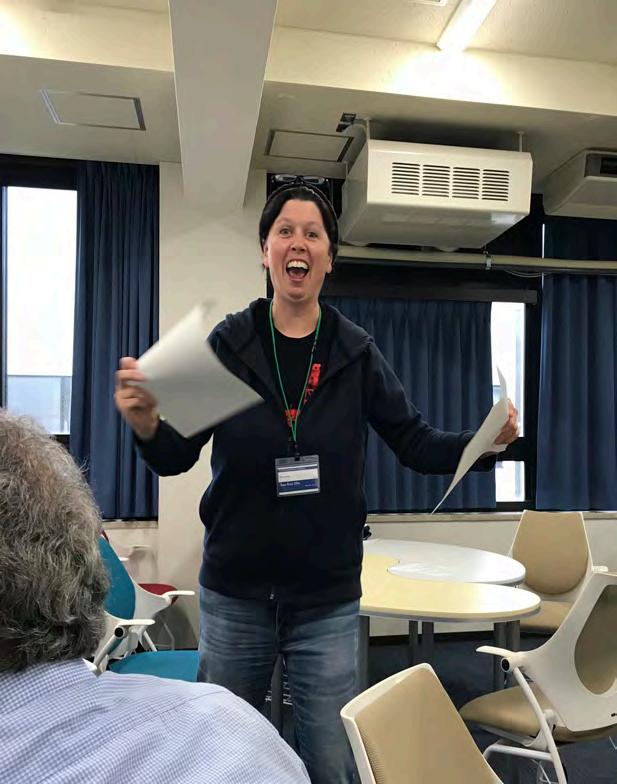
Check out these JWC talks given by present or former JETs:
Percival Constantine, “Successful Self-Publishing”
Joe Palermo, “Self Publishing A Memoir at Minimal Cost”
Michael Frazier, “O Death, Where is Your Sting?: A Poetics of Hope!”
Joanne Anderton, “Speculative Fiction Autobiography”
Charles Kowalski, “Personality Types and Character Arcs”
Tom Baker, “How to Write a Pub Quiz”
Suzanne Kamata, “Writing Identity” Panel Discussion
CONNECTisamagazineforthe communityinJapan,bythe communityinJapan.Everyone iswelcometowrite,nomatter yourexperienceorstyle!Ifyou haveanideayouwanttoseein thesepages,reachouttoour HeadEditor,oranyofour awesomesectioneditors.We’ll workwithyoutomakeitthe bestitcanbeandshareitwith ouraudienceofthousands.Not everyarticleneedstobean essay!Wefeatureinterviews, infographics,top-tenlists, recipes,photospreads, travelogues,andmore.
ContacttheHeadEditorof CONNECT,MonicaHand,at connect.ajet.editor@gmail.com withyoursubmissions, comments,andquestions.
Writeaboutsomethingyou’re doing.Writeaboutsomething youlove.Tellusastory.
SPOTLIGHT
Tellusaboutsomeoneinyour communitywho’sdoing somethingneatandnoteworthy. Cooks,collectors,calligraphers— wewanttohearaboutthe inspiringpeoplearoundyou.
PHOTOS
MembersoftheJETcommunity contributedtothephotosyou seeinthisissue.Ifyou’rean aspiringphotographerandwant yourworkpublished,pleaseget incontactwiththelead designer,LloydCruickshank,at connect.ajet.visualmedia@g mail.com.
Letusknowwhatyouthink. InteractwithusonFacebook, Twitter,andissuu.com.
CONTRIBUTORSPAGE
Haveanarticleyouwantto share?JoinourContributorsPage onFacebooktostayconnected withourteamsoyoucanshare youradventureswheneverstory strikes!
InterestedincontributingtoCONNECT?Wanttostayup-to-dateoninterviewopportunities, photorequests,andCONNECTannouncements?GetinvolvedwithCONNECTbycontacting ourcurrentCONNECTstaffandreadingaboutthepossiblepositionshere.
YoucanalsolikeusonFacebook,followusonInstagram,andinteractwiththemagazinevia CLIPatISSUU.